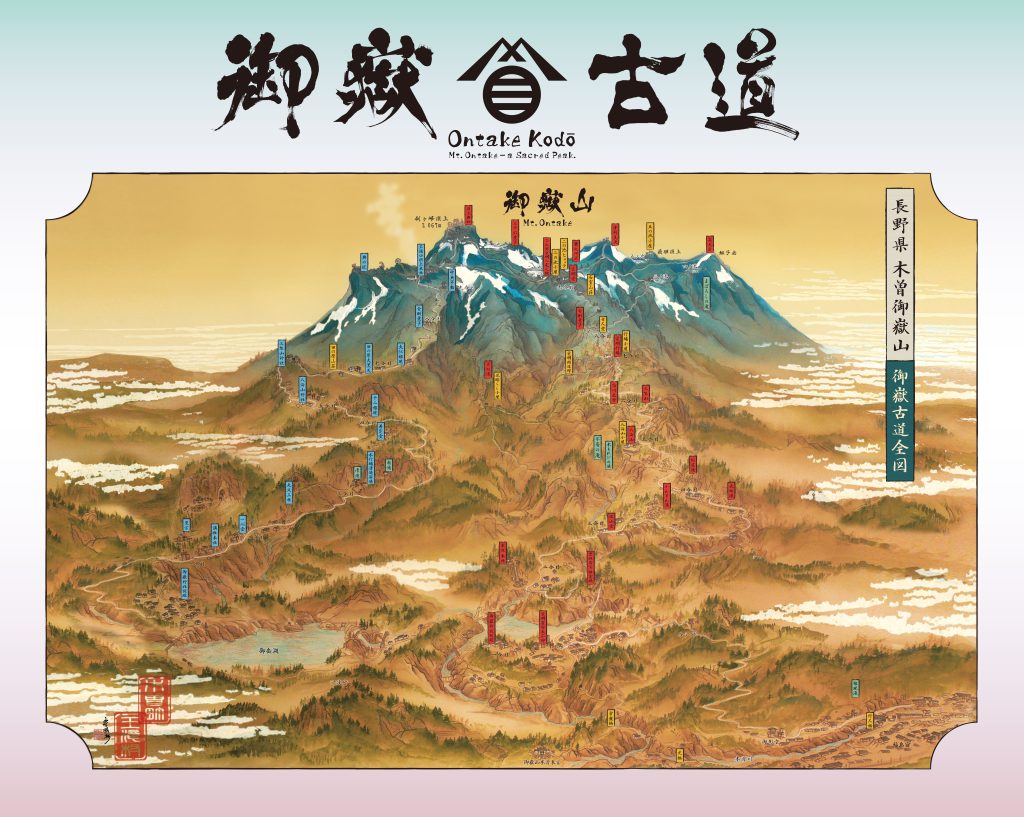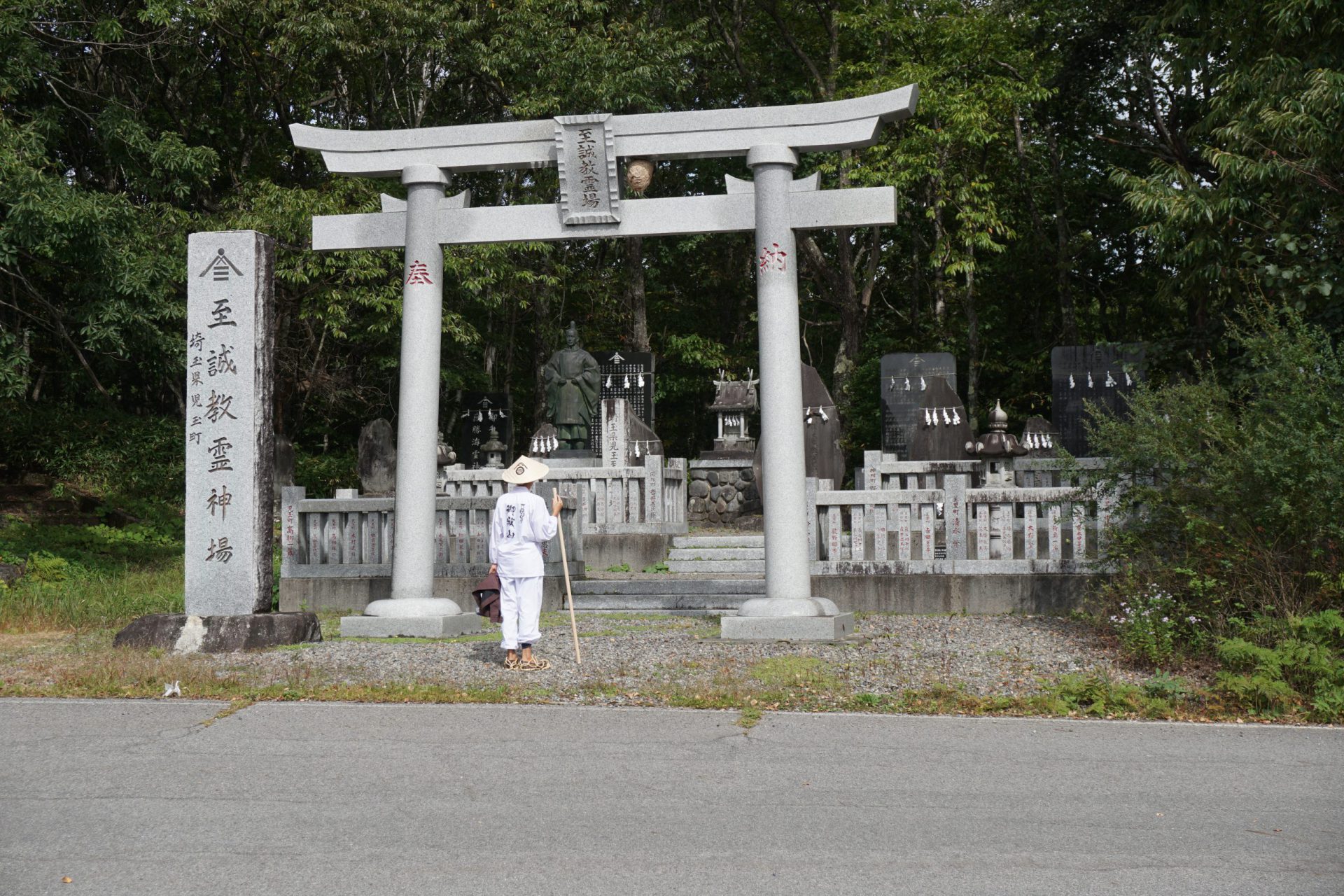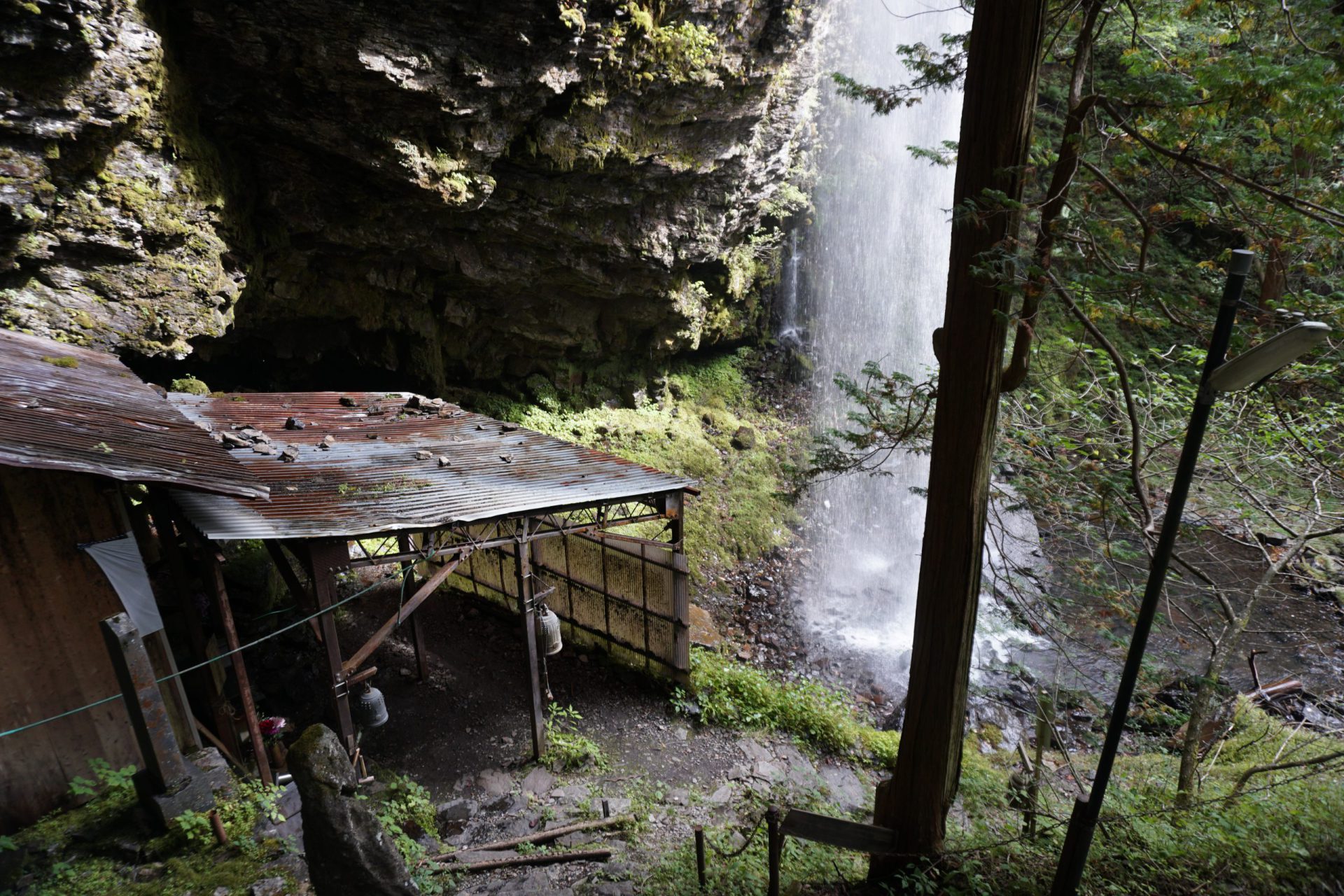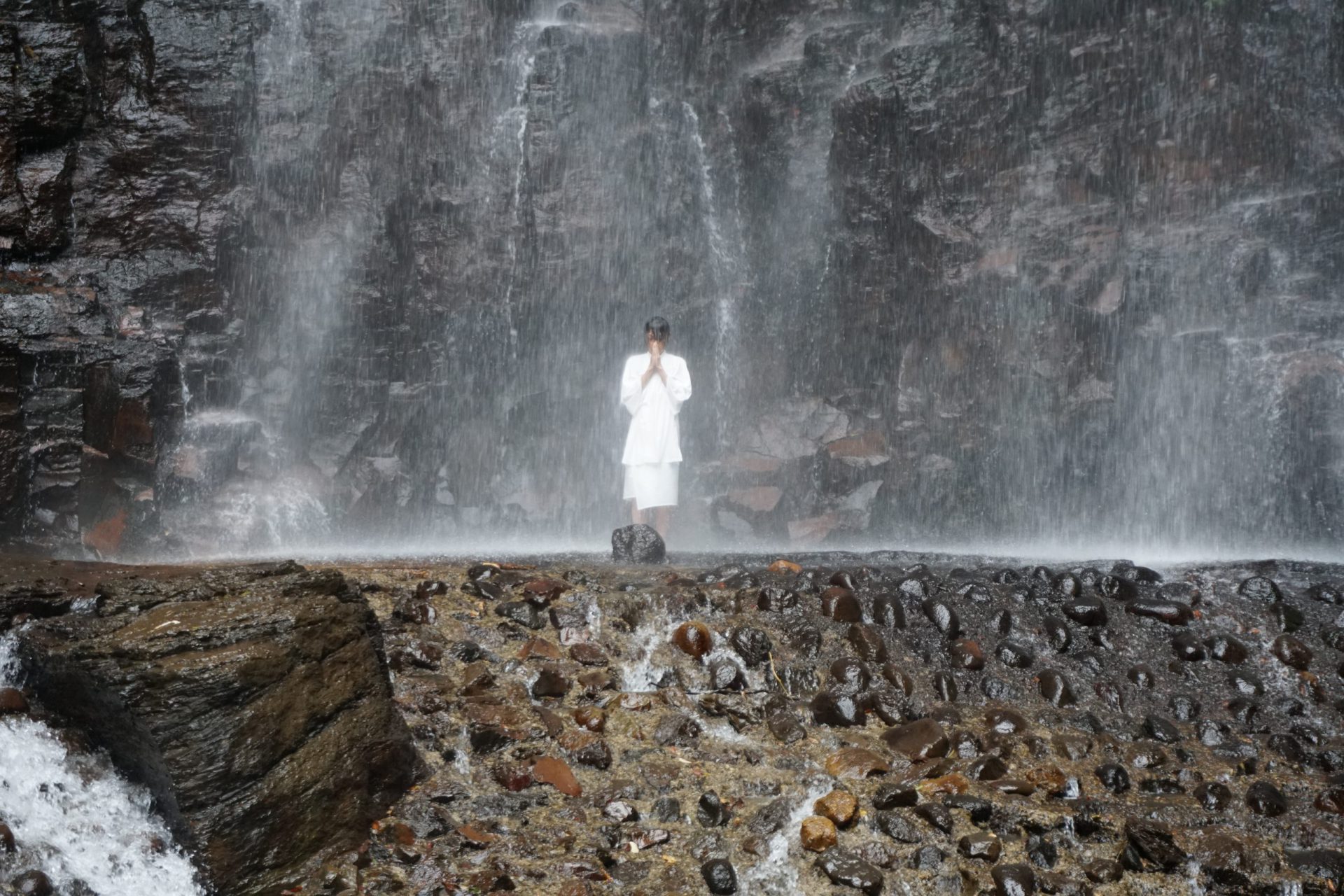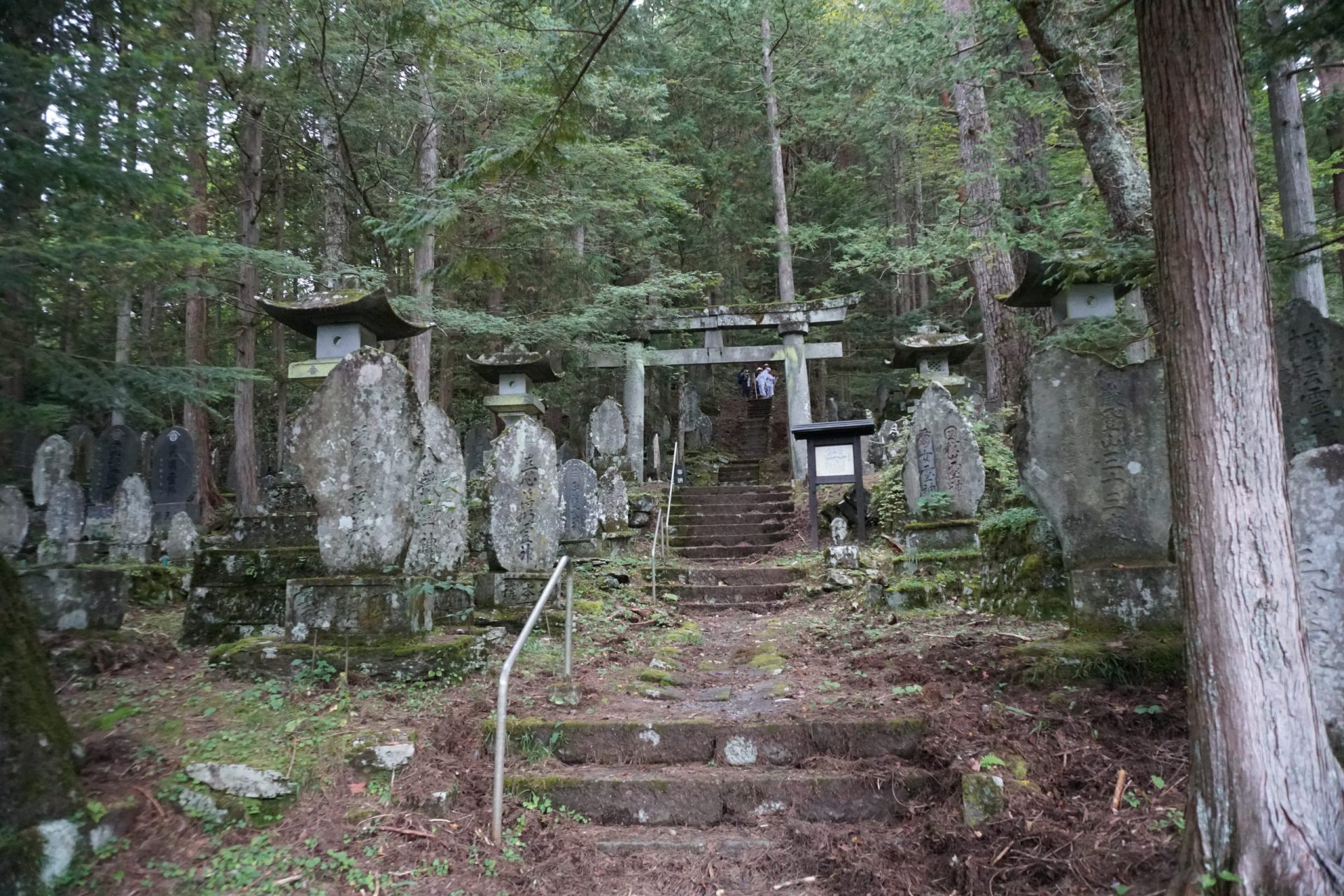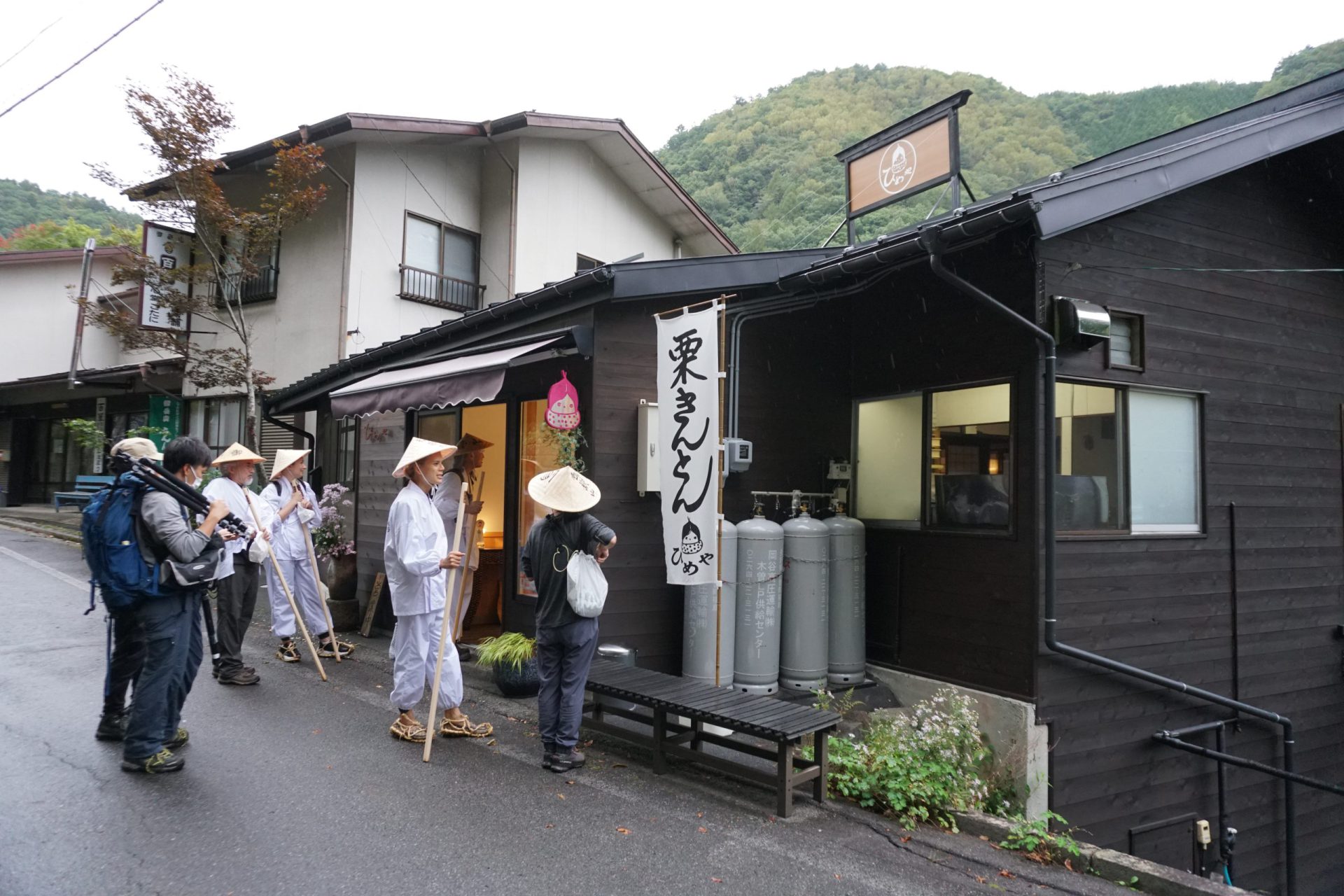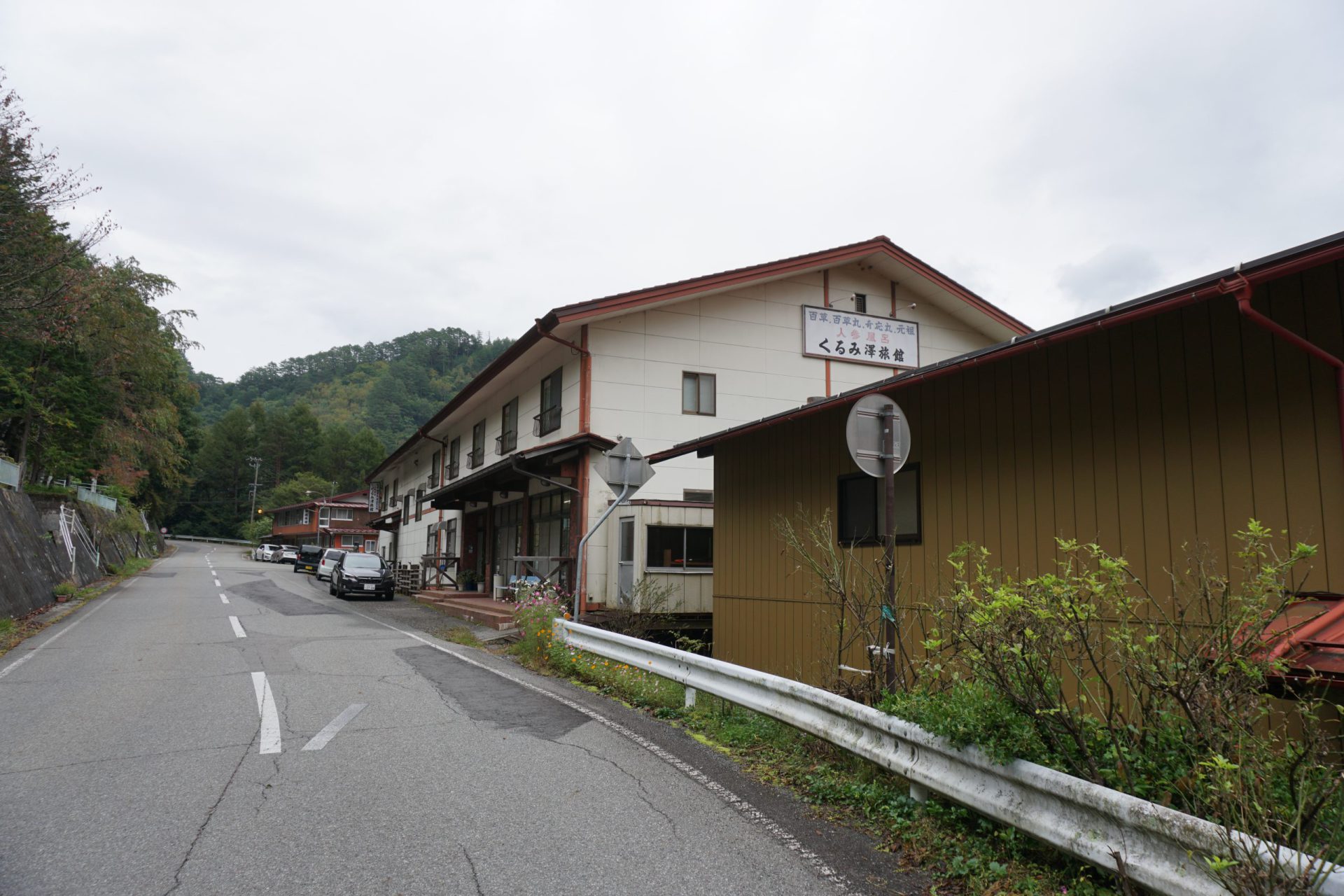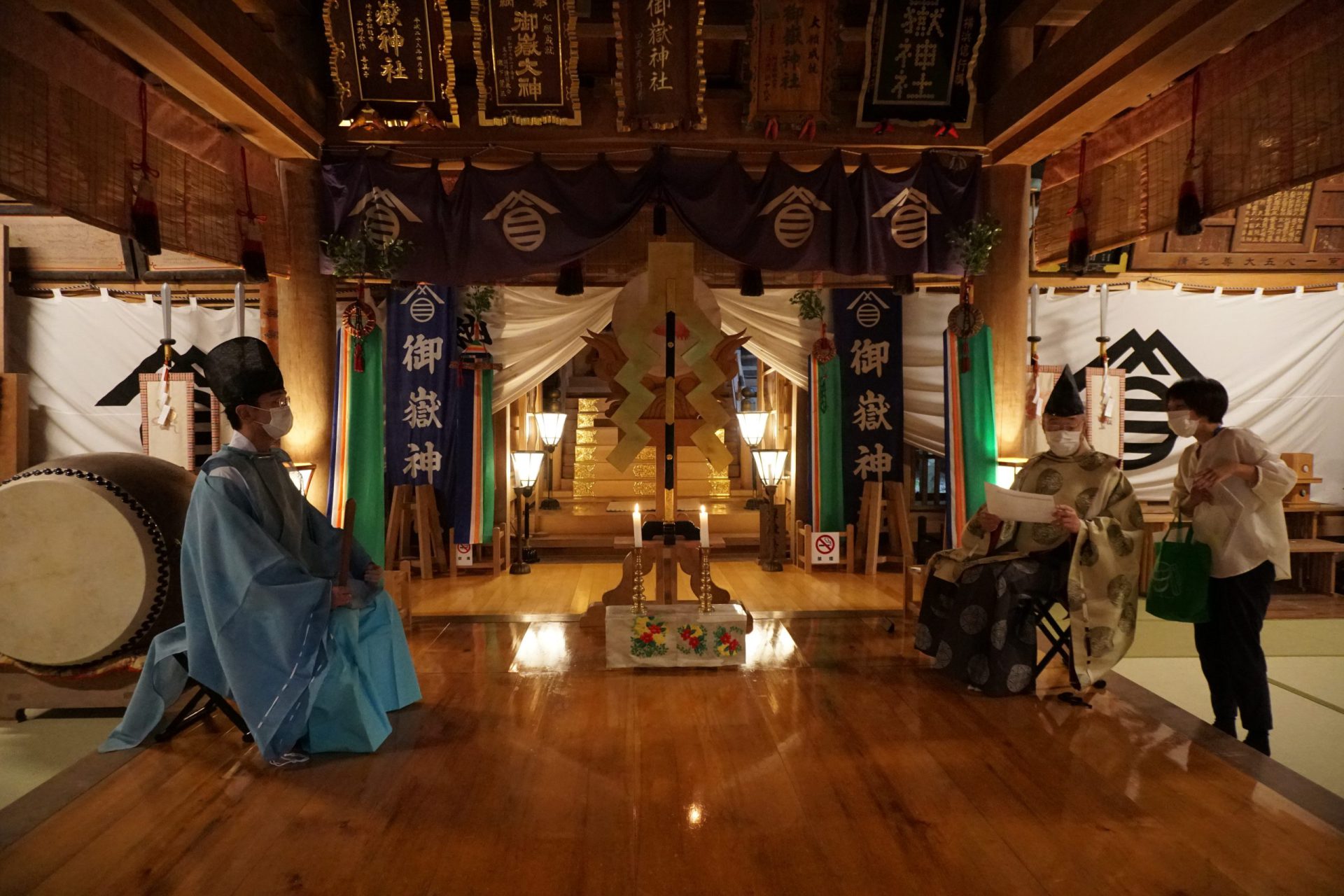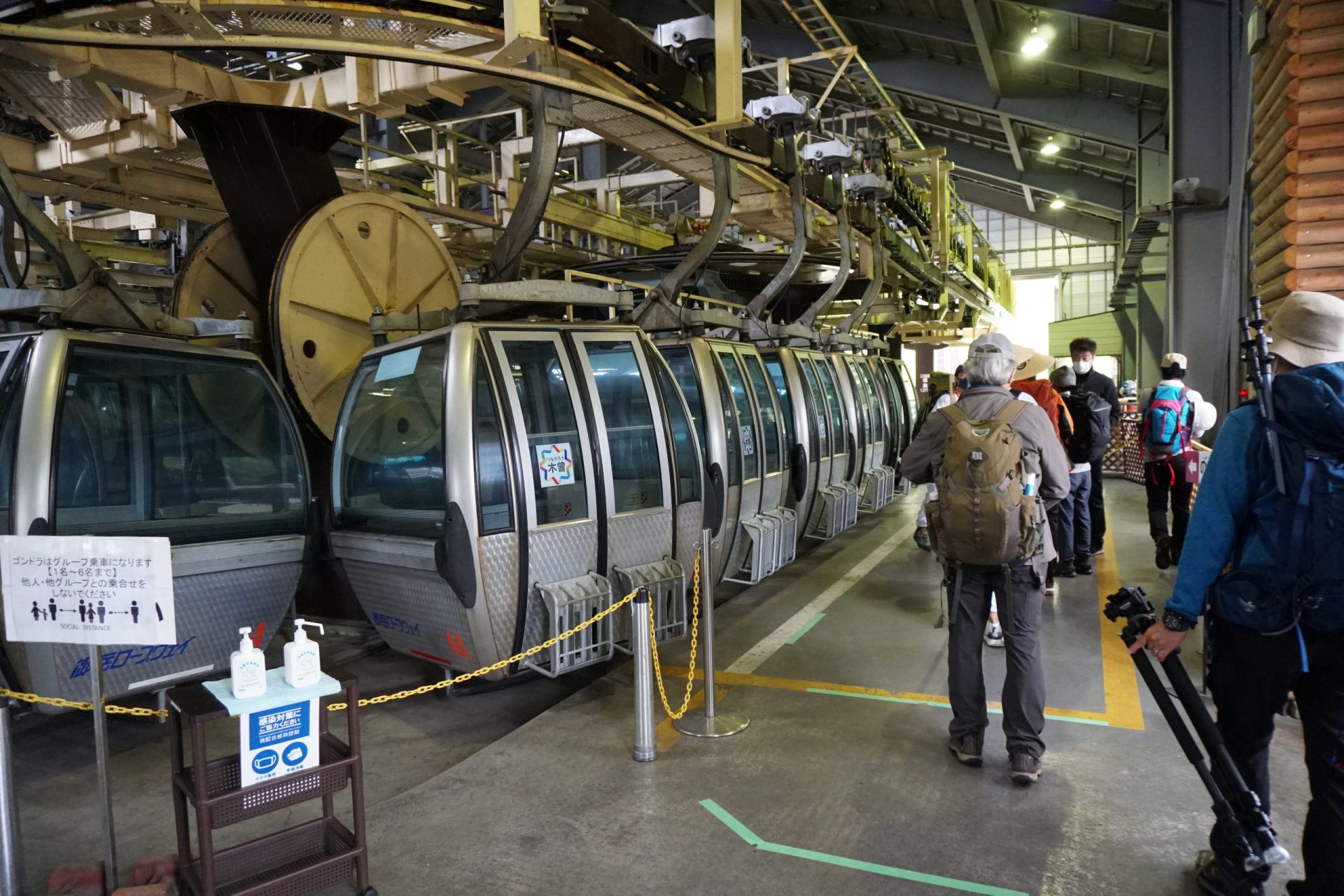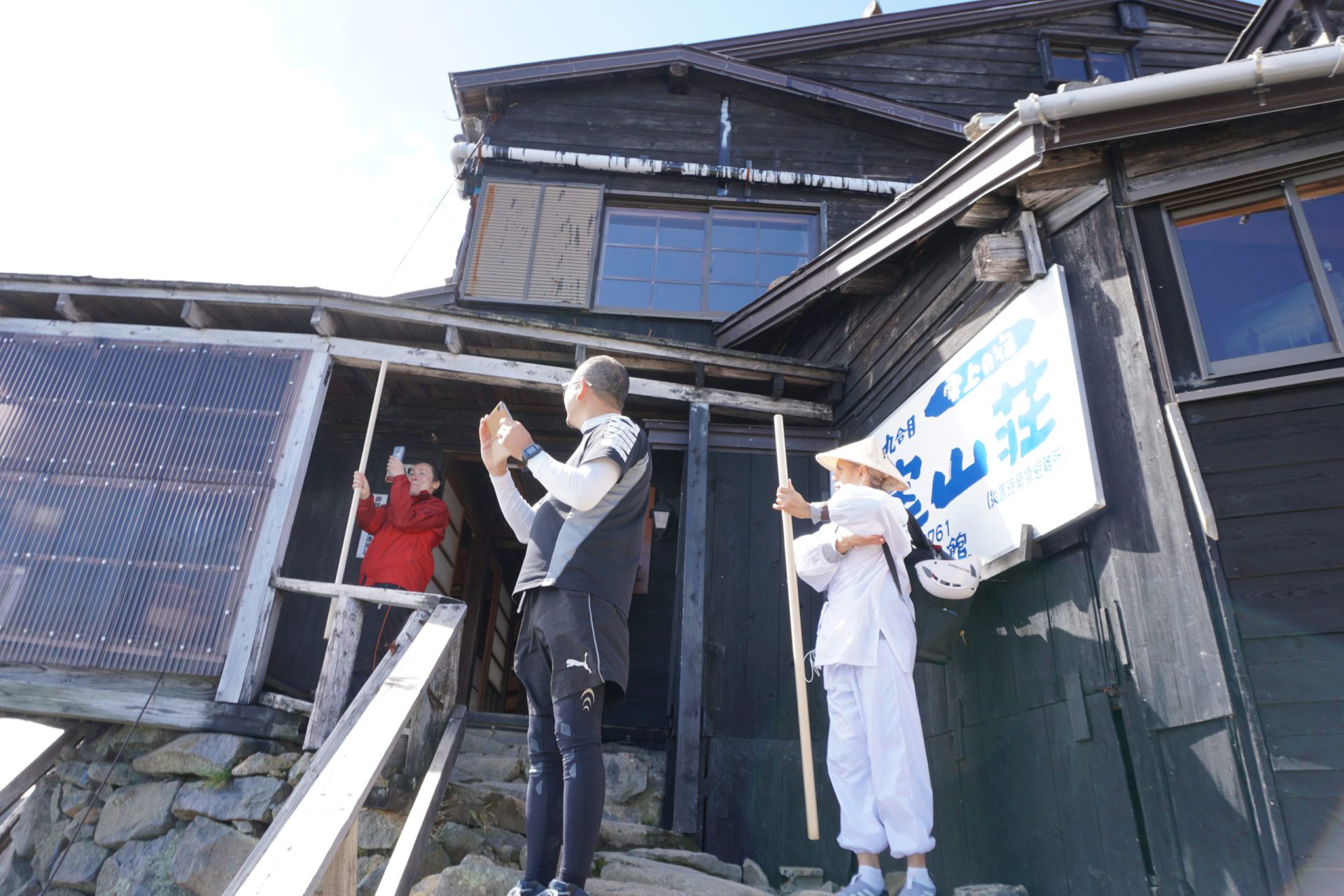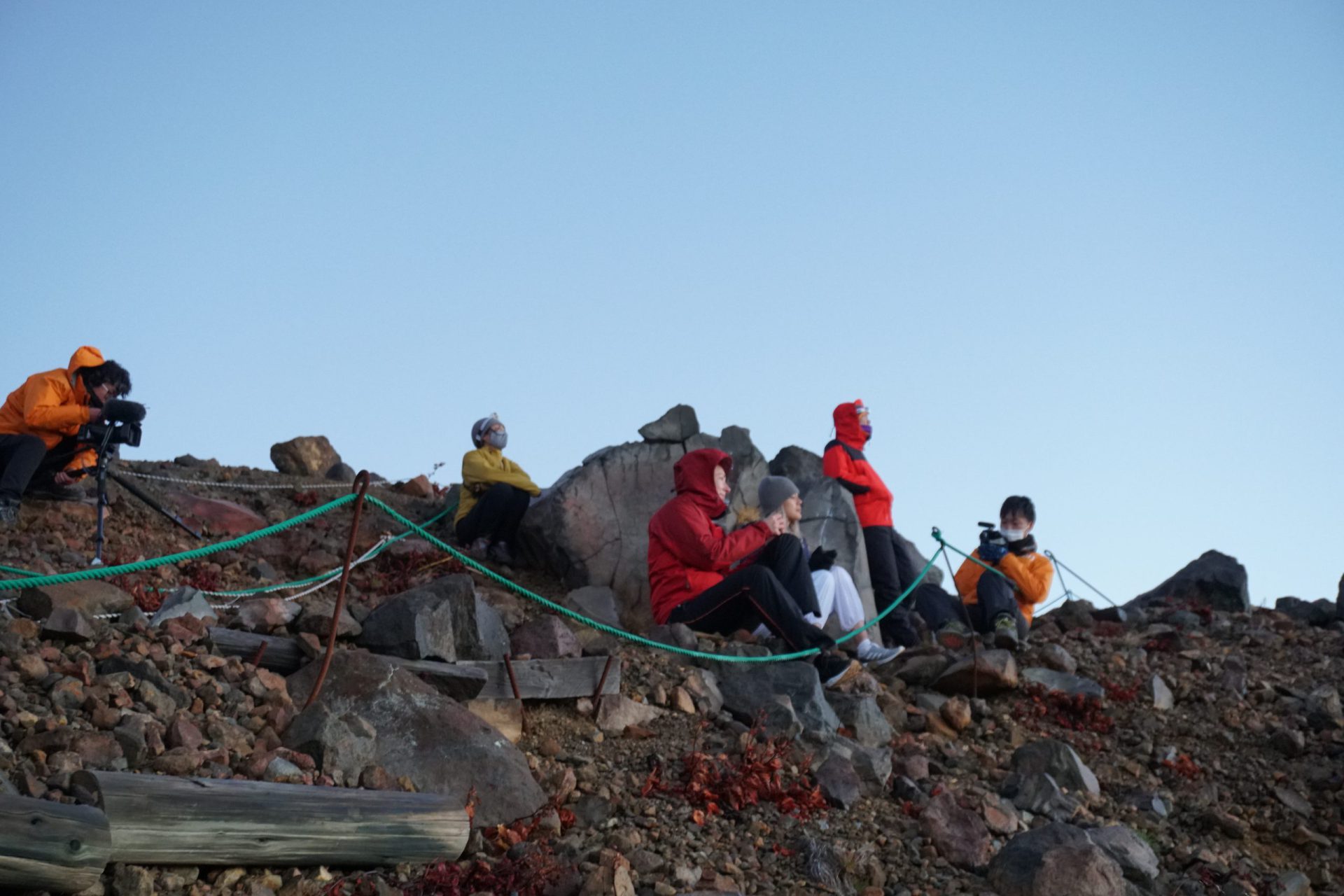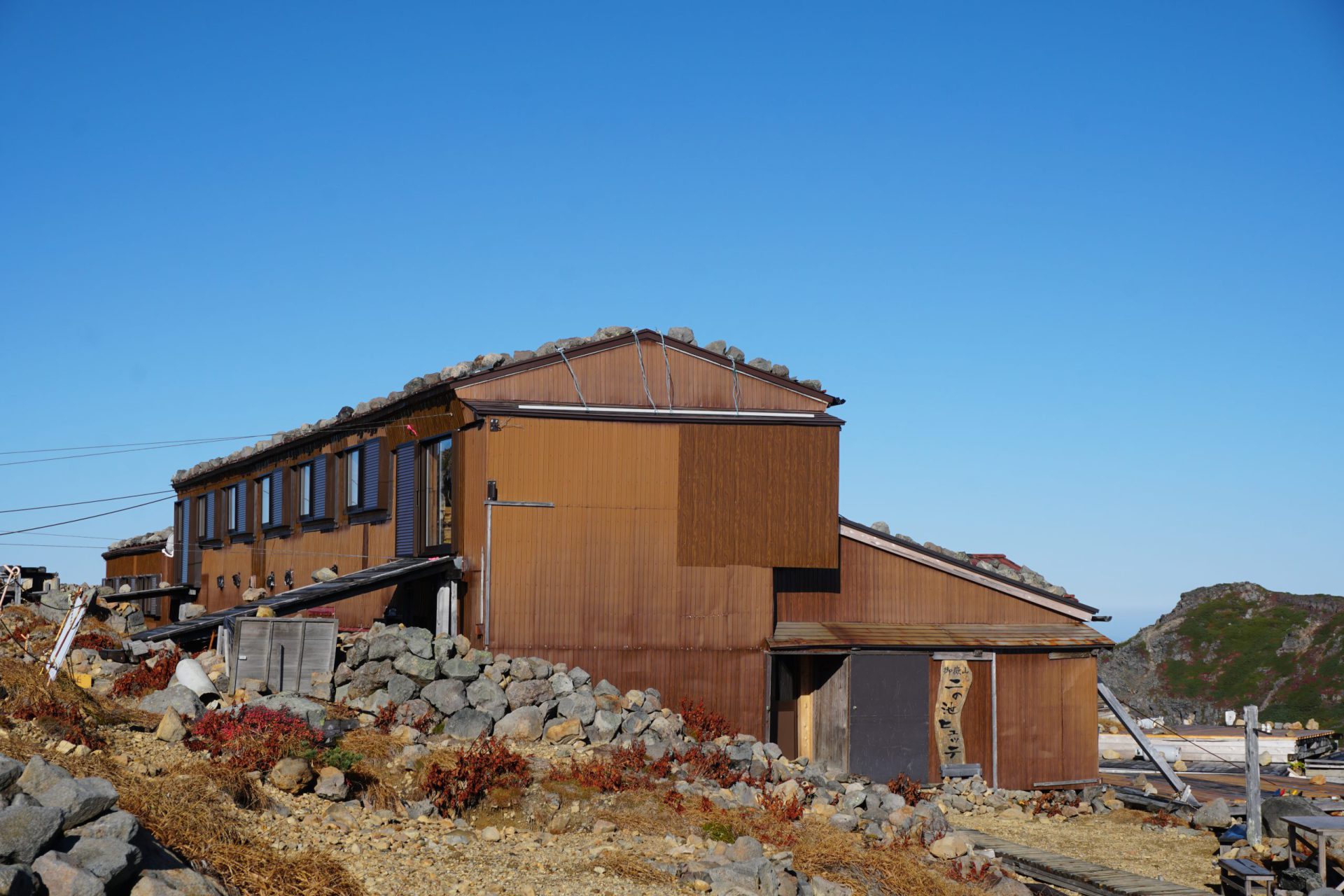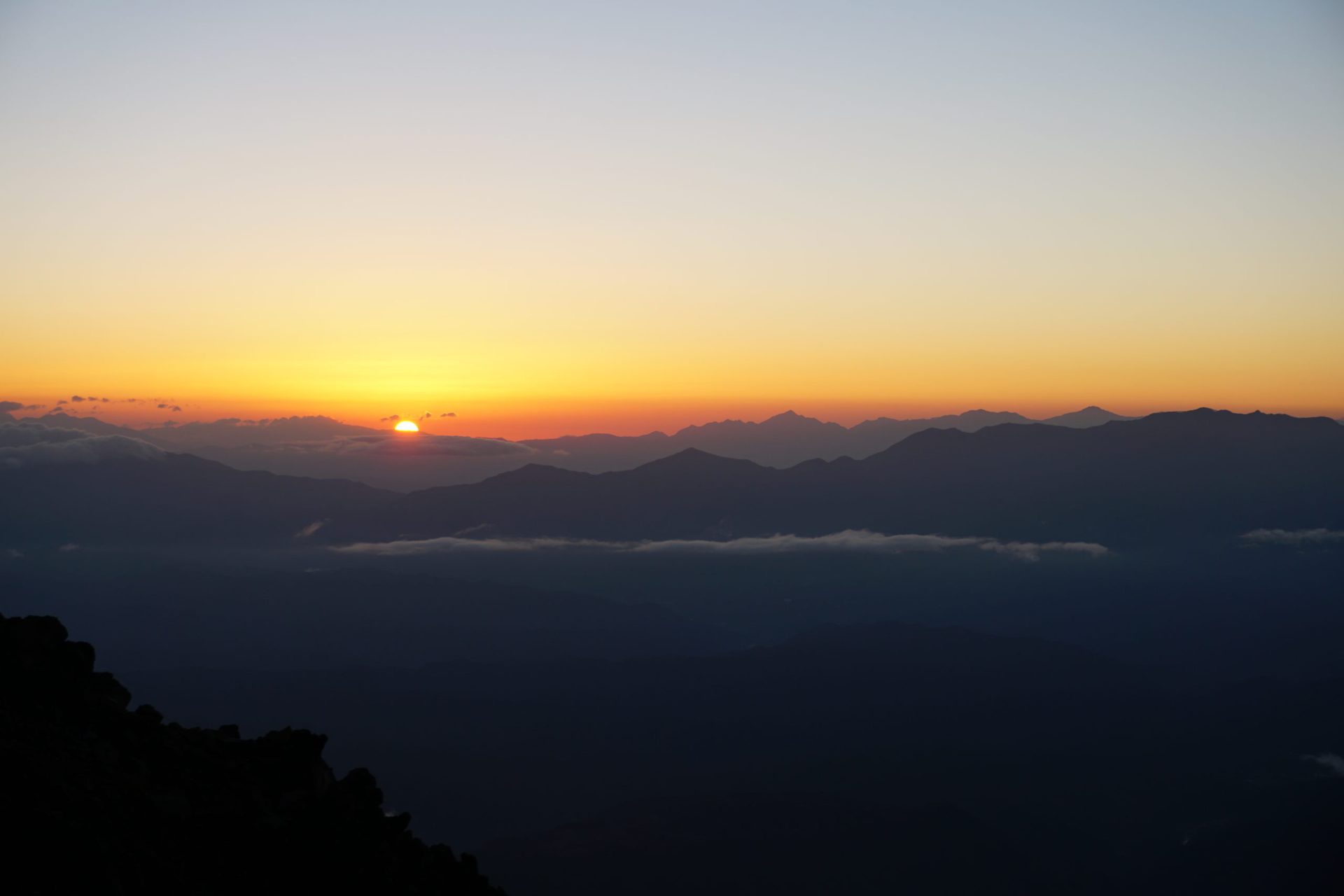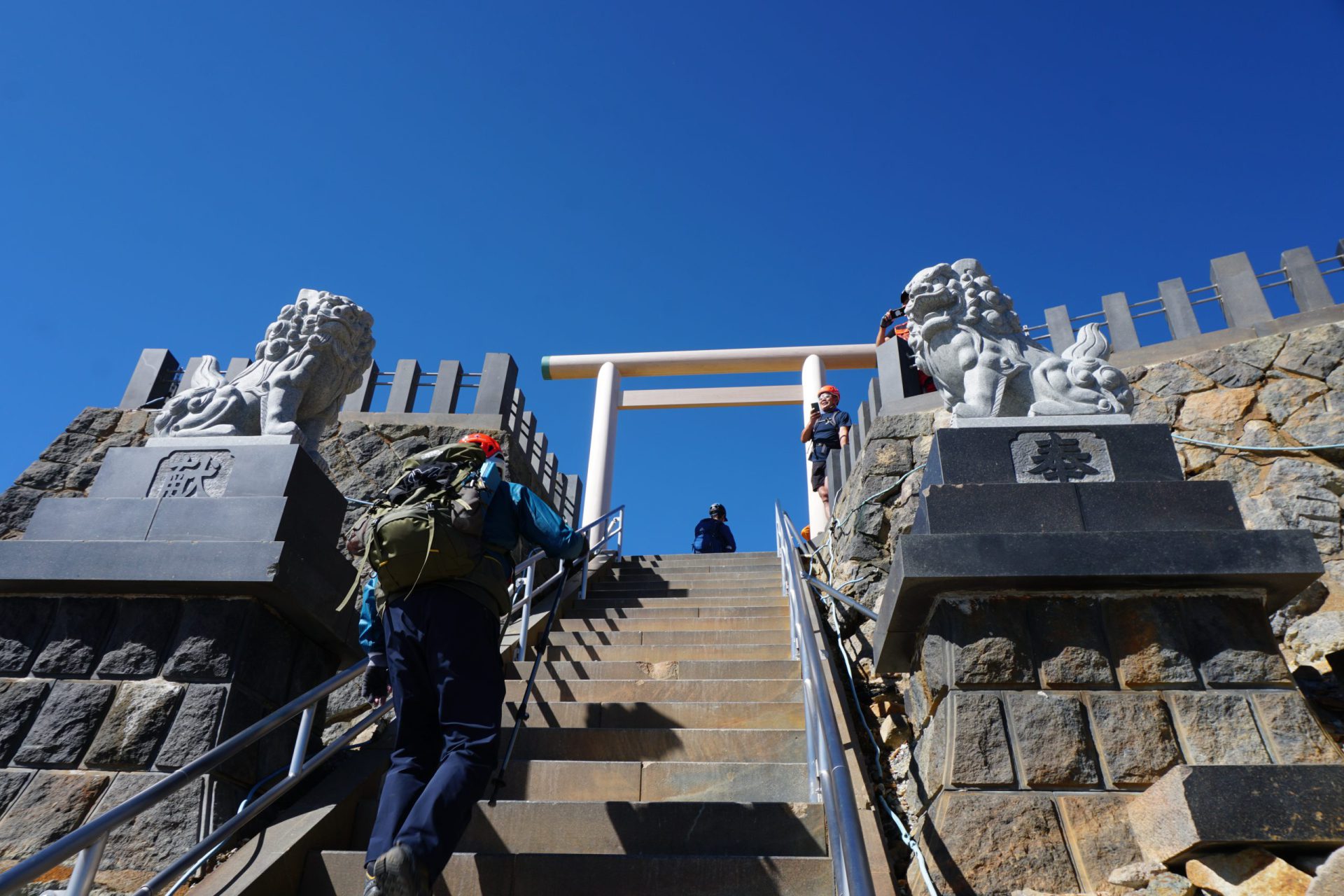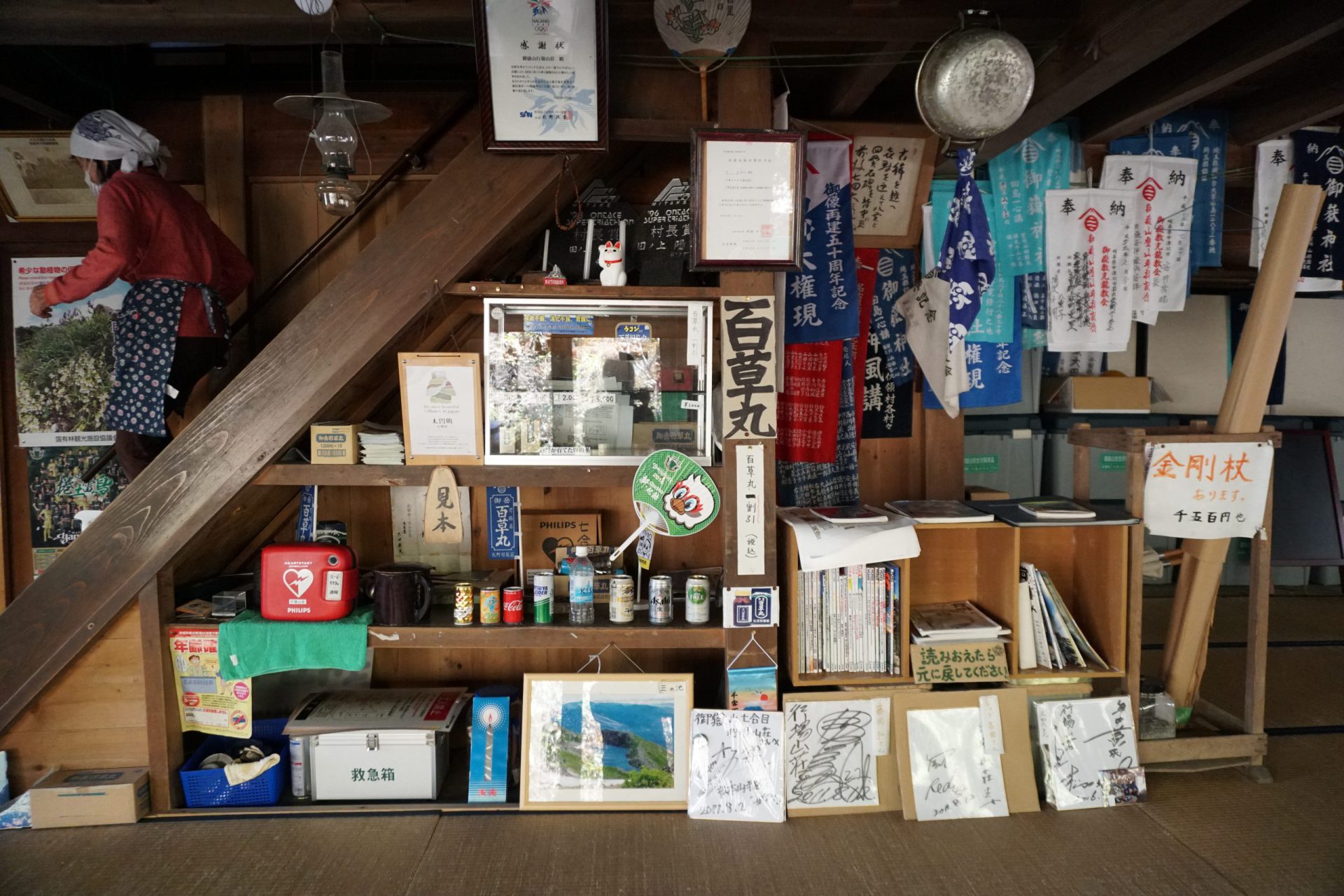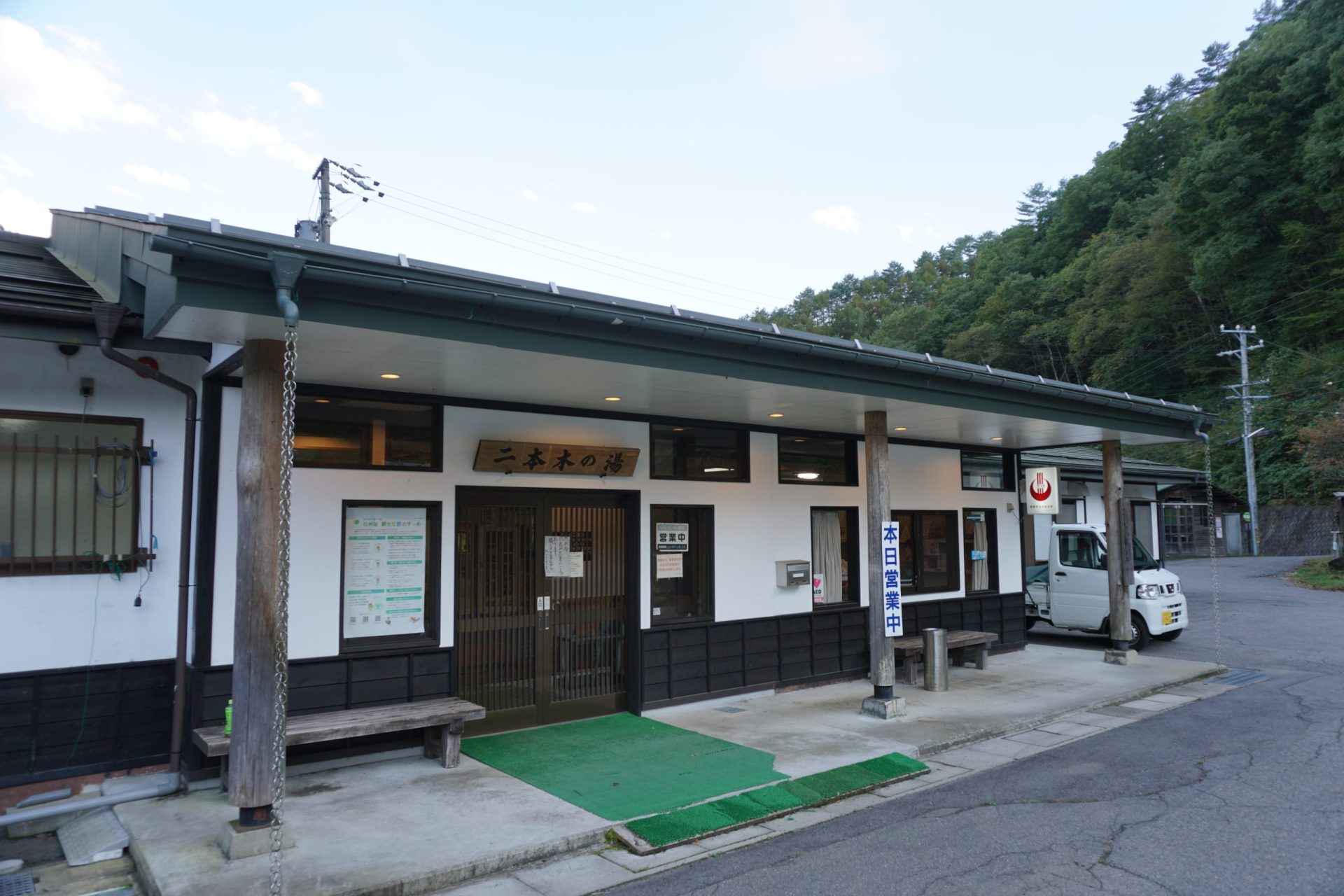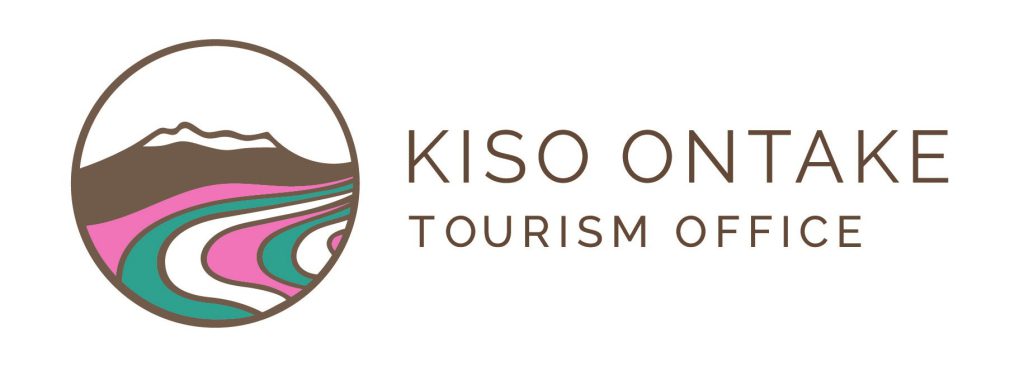Walk the ancient path, bathe in a waterfall. The actions before your faith climb are key.
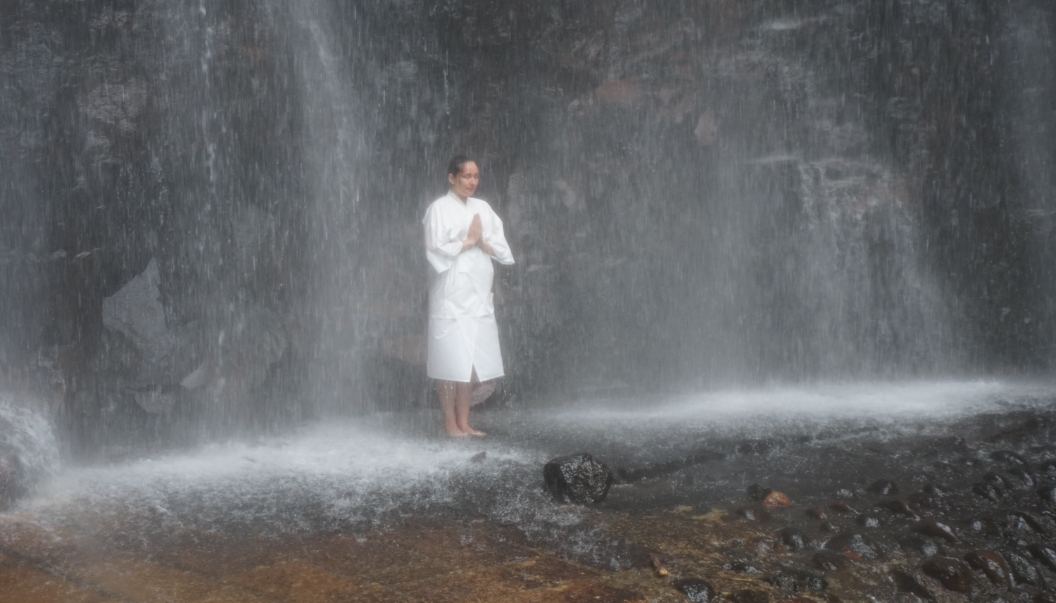
Mt. Ontake stands at a lofty 3,067 meters in elevation straddling the border of Nagano and Gifu Prefectures and sprawling across the town of Kiso and village of Otaki in Nagano and the cities of Gero and Takayama in Gifu. It is known as an active volcano, and when it erupted in 2014, a total of 63 people either lost their lives or their whereabouts remain unknown. Currently, the volcano alert level has been lowered from the 3 it was given at the time of the eruption (mountain entrance prohibited) to a 1 (caution required as the volcano is active), but no one is permitted within a 1-kilometer range of the crater.
There are seven trailheads in total that start in either Nagano or Gifu prefectures. If you make use of the ropeway, you can climb and descend the mountain on a day trip. The people climb using the Kurosawa trailhead route. The Ontake Ropeway will take you directly from the 5th Station to the 7th Station. From there, you can reach the Okusha, or “upper shrine,” of Ontake Shrine in about 3.5 hours, where you will be standing atop the main peak, Ken-gamine.
This time we are focusing on the stages prior to climbing the mountain, as our journey will trace the steps of a faith climb. The historic Ontake Kodo pilgrimage path through the foothills that lead to the Otaki route trailhead remains today. Receive a blessing from the Satomiya, or “foothill shrine” of Ontake Shrine located on the path and purify your body and soul under the Kiyotaki waterfall in preparation for climbing the sacred mountain. Walking along the Ontake Kodo, you will see Reijin monuments, essential elements of the Ontake faith, dotting the path. Simply walking along the Kodo path enveloped in its silence is enough to soothe the soul.
What is the Ontake faith?
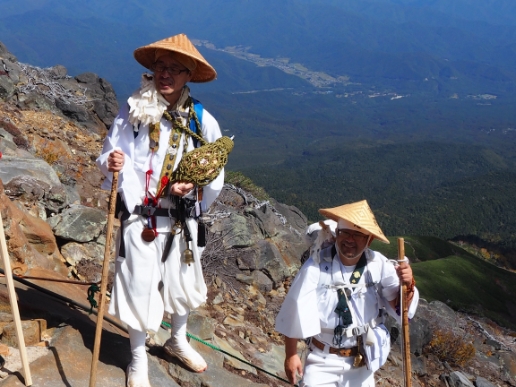
It is said people first started climbing Ontake mountains in the 9th century. In the Muromachi period, it flourished as a tohai site for Shugendo asceticism. It was finally opened to the general public in the Edo period. After the ascetic, Kakumei from Owari pioneered the Kurosawa trail in 1784 and the ascetic Fukan from Musashi pioneered the Otaki trail in 1794, the Ontake faith began to spread throughout the country. Ko, which are tohai faith climbing groups, began to form, and they became known as Ontake-ko. As they became more organized, an official Ontake religion was established in 1882.
The Ontake faith worships the mountain itself. Kakumei and Fukan designated Mt. Ontake as the resting place for the soul after death and taught that the soul returns to the mountain. Ontake Shrine’s Okusha is at its summit and the Satomiya is in the foothills, and at the height of the summer climbing season, the mountain is bustling with Ko from all over the country dressed in white shrouds.
What are Reijin monuments?
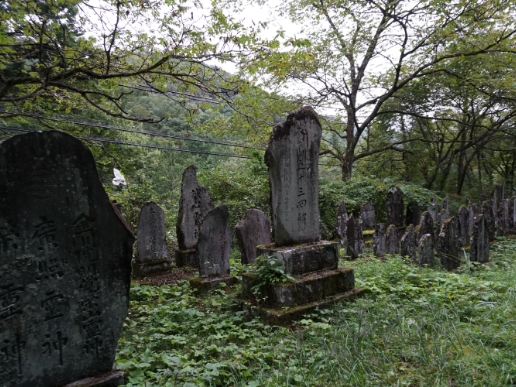
They are stone monuments erected by each Ko to pray for the return of their members’ souls to Mt. Ontake after they die. There are more than 20,000 Reijin monuments standing along the Ontake Kodo, the mountain’s climbing trails, and across the entire mountain. They are a unique sight that cannot be seen anywhere else, and they speak to the depth of the religion’s faith.
The Kurosawa route and the Otaki route were both opened by ascetics in the days of yore. The ancient pilgrimage paths remain on both routes and their surrounding areas are dotted with shrines and waterfalls with deep ties to the Ontake faith. When you make your faith climb, make sure to also get a feel for the remnants of days gone by in the foothills.
The area around Mt. Ontake
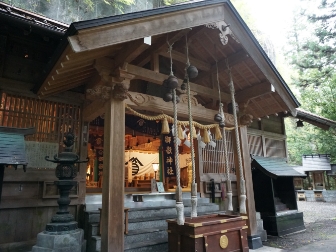
Ontake Shrine Otaki Trailhead Satomiya
Located at the 1st station on Ontake mountains, the shrine grounds are lined with five kinds of evergreens known as the five trees of Kiso. Climbing the 451 stone steps that lead up to the shrine, you will find the main hall standing against a high stone wall. The deities enshrined here are Kuninotokotachi-no-mikoto, O-anamuchi-no-mikoto, and Sukunahikona-no-mikoto. The spring water here has been selected as one of “Shinshu no Mesui Hisui” (Shinshu’s most famous or secret water sources).
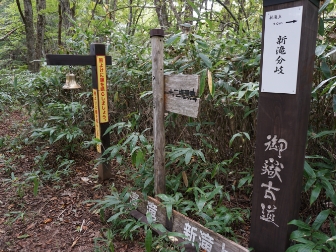
Ontake Kodo
This refers to the path between the 1st station that starts at Ontake Shrine’s Satomiya and the 5th station, where Hakkaisan Shrine stands. Although some portions of the road are now paved, if you walk along the mountain path between the densely growing trees, you will feel as if you have slipped back to a time in the ancient past. Omata Sansha Shrine and Juni Daigongen Shrine are also situated along the path.
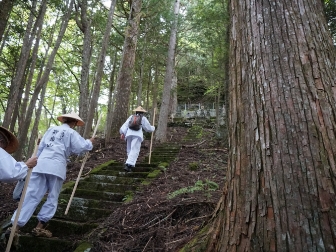
Omata Sansha Shrine
Atop the steep 383 steps at the 3rd station, three bronze statues stand quietly. They are called the Three Gods of Ontake: Ontakesan-Zao-Daigongen, Hakkaisan-Daizura-Shinno, and Mikasayama-Tori-Tengu. They are offered here for the followers of the faith who are unable to visit each of the sacred sites on Mt. Ontake.
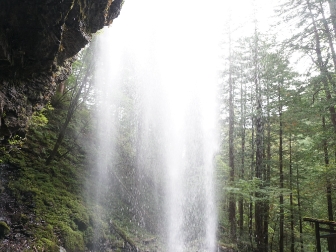
Shintaki and Kiyotaki Waterfalls
These are the two waterfalls that flow between the 3rd and 4th stations. Kiyotaki is a 30-meter-high waterfall with an echoing roar, and the place where devotional purification once took place for 75 or 100 days before making a tohai faith climb. Shintaki is where Shugendo ascetics practiced their beliefs in the rocky cave behind the waterfall.
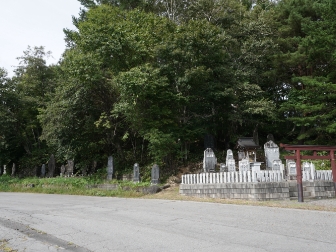
Juni Daigongen Shrine
This shrine sits at the 4th station. It is said that the ascetic Fukan syncretically enshrined Konohanasakuya-hime, the goddess of Mt. Fuji, here. She is known as the goddess of fertility and child-rearing, and there is a custom of offering 12 small Saruboko dolls here when one’s prayers have been fulfilled.
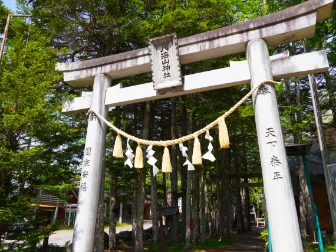
Hakkaisan Shrine
After opening the trail to Ontake mountains, the ascetic Fukan and his disciple, the ascetic Taiken, opened a trail to Mt. Hakkai-san in the Echigo Province (Niigata today). It is said that they enshrined the Echigo deity Kunisatsuchi-no-mikoto here at Hakkaisan Shrine. The sacred water that flows behind the main hall is said to be helpful in curing eye diseases. The shrine is located at the 5th station.
Ontake Kodo – Main sites related to the faith on the Kurosawa Trail
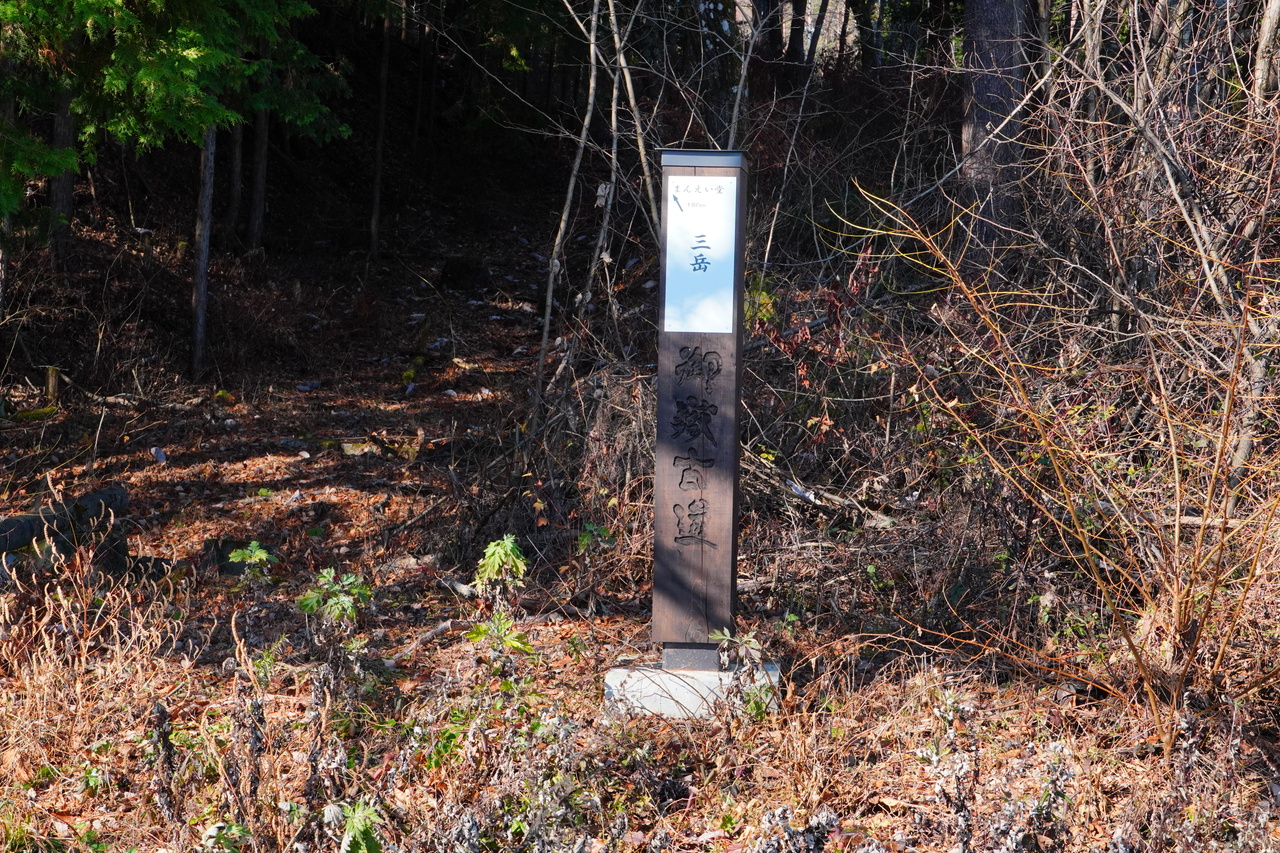
Ontake Kodo
Kodo means “ancient road,” and this one is associated with the ascetic Kakumei. The trail starts at Gyonin-bashi bridge, which is about a 10-minute walk away from JR Kiso-Fukushima Station, and goes past Ontake Shrine’s Betsuden, Wakamiya, and Satomiya before passing Juni Daigongen Shrine, Oharai-taki waterfall, Hakkaisan Okami, and Shirakawa Okami before arriving at the 6th station near the Ontake Ropeway summit station.
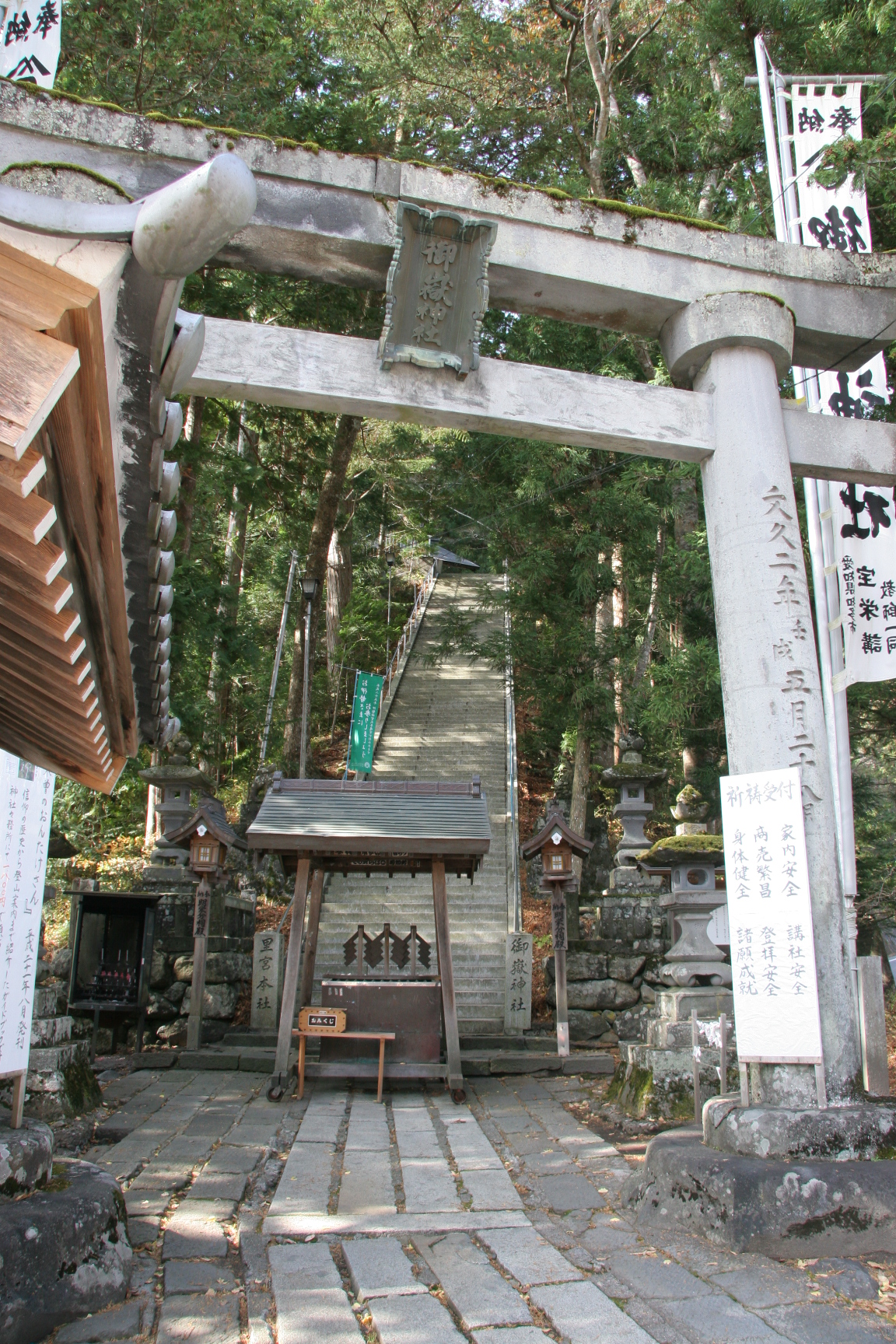
Ontake Shrine Kurosawa Trail Satomiya
Just as there is an Ontake Shrine Satomiya on the Otaki route, the Kurosawa route also has one located at the 2nd station. A stone staircase of 108 steps leads up to the main prayer hall. Compared to the Otaki Trail Satomiya, this one is more compact and cozier. The Wakamiya stands close to the Satomiya.
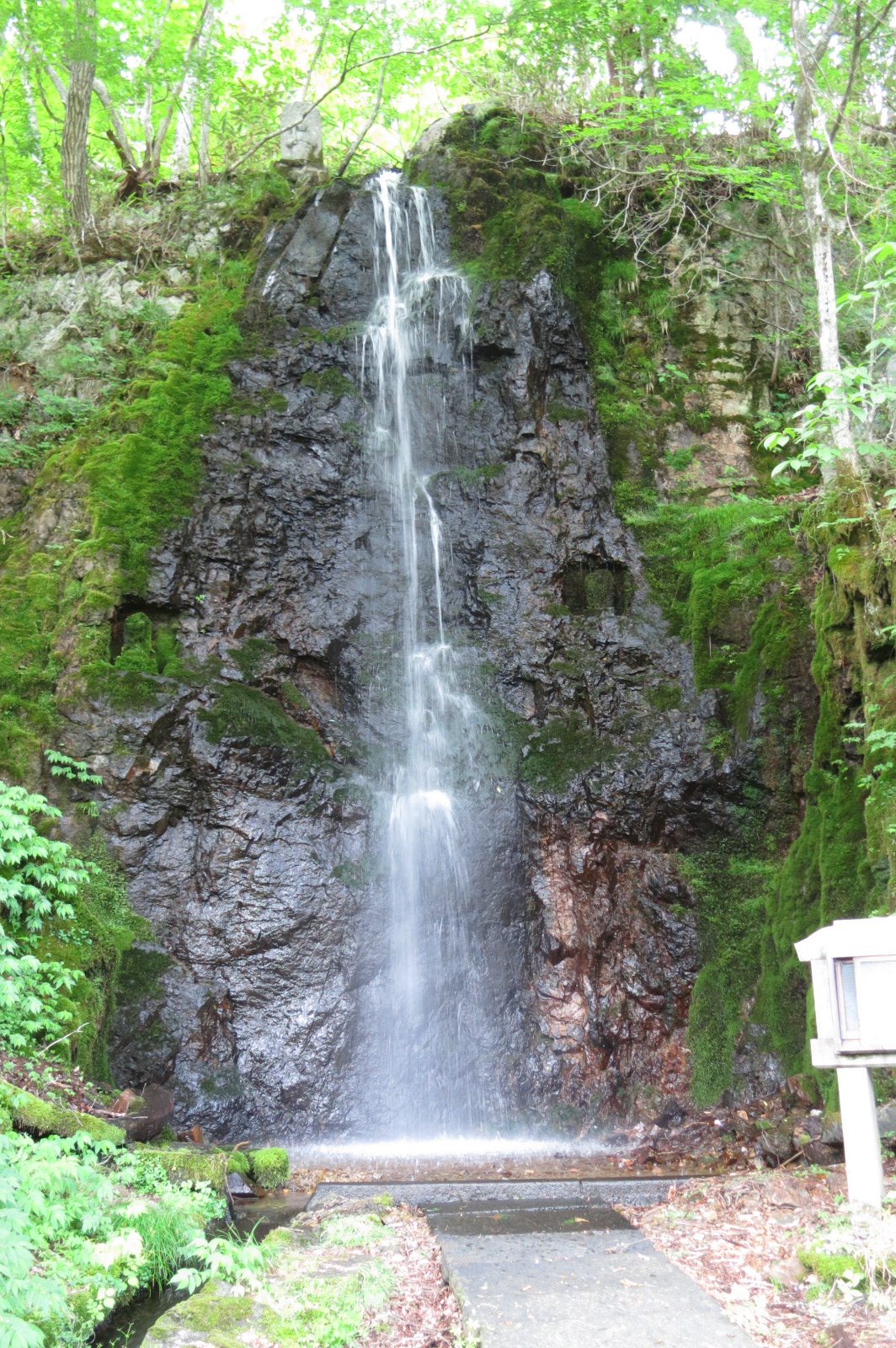
Oharai-taki Waterfall
Passing through the torii gates at the 4th station, you will see the 8-meter Oharai-taki waterfall appear. It is a manmade waterfall whose construction began during the Meiji period and finished in the Taisho period. As the name, which means “purifying waterfall” suggests, it was a place where followers of the faith conducted the ritual purification of body and mind under the waterfall before endeavoring on their faith climb.
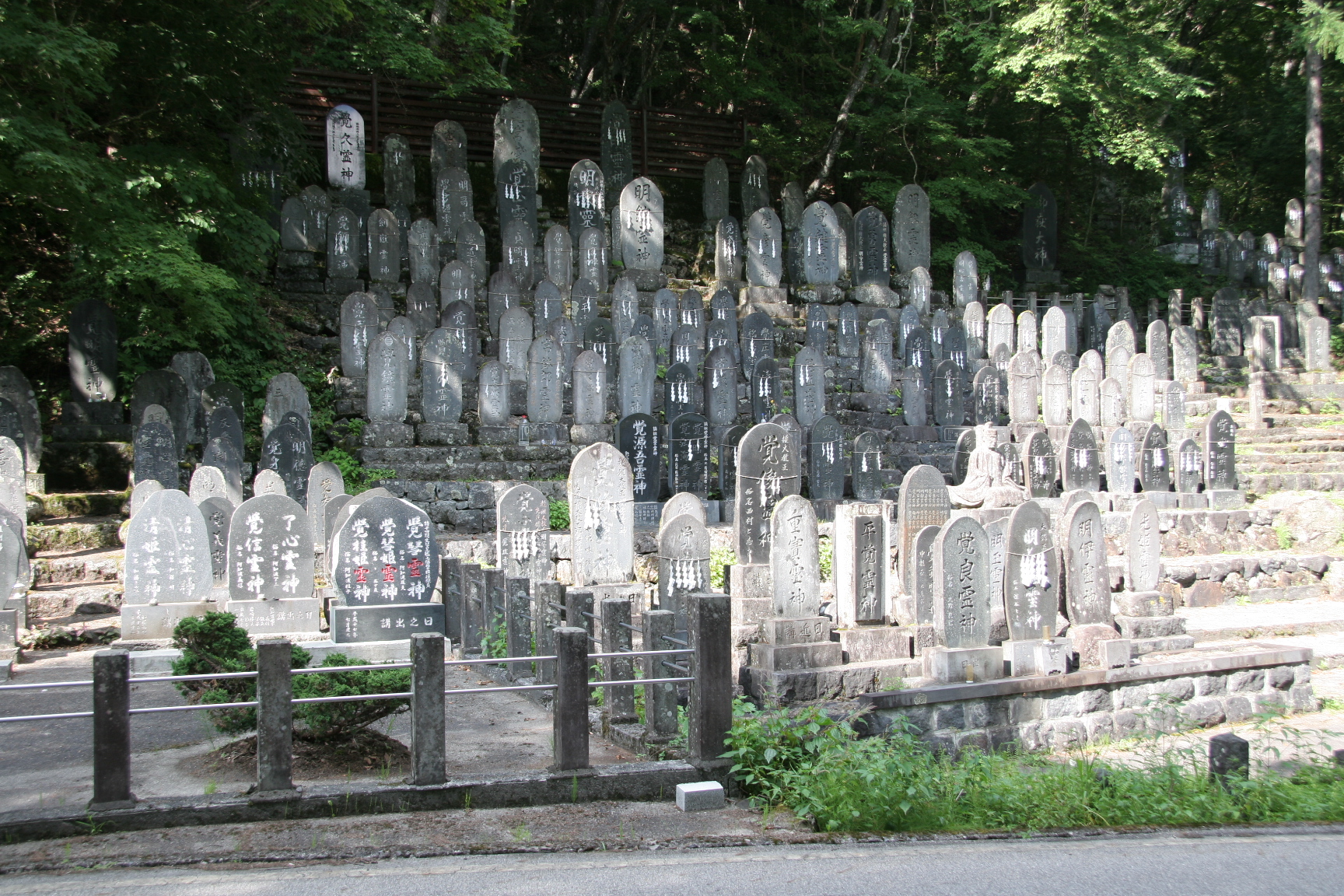
Reijin Monument Clusters
Along the Ontake Kodo, there are intermittent rows of Reijin monuments that enshrine followers of the Ontake faith. Further along from the Oharai-taki waterfall near the Matsuo waterfall, you will find a large number of Reijin monuments. This area is called the Gomadohara Reijinba deriving its name from the place of the same name.
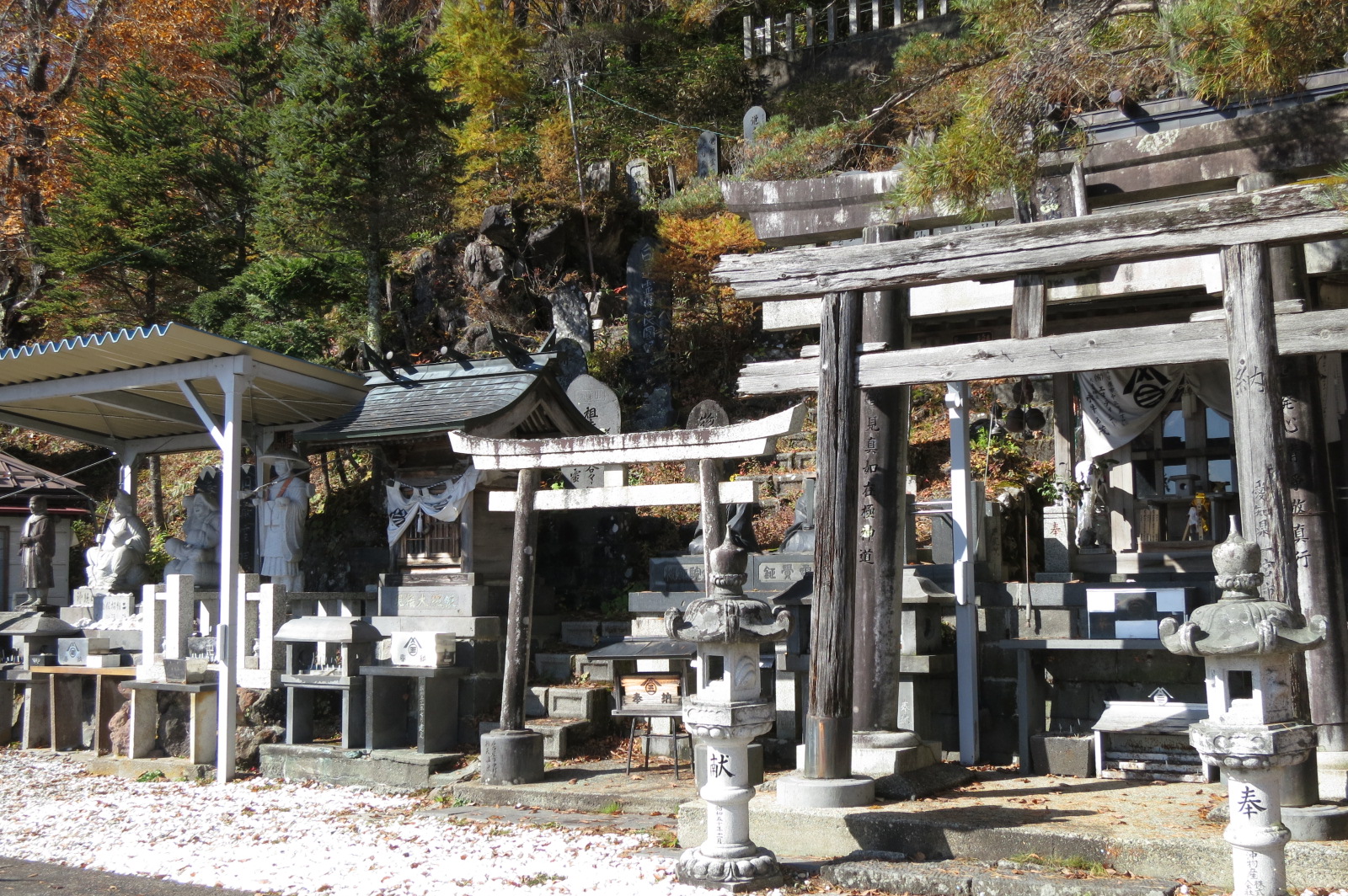
Hakkaisan Okami
At the 5th station, Hakkaisan Okami enshrines Kunisatsuchi-no-mikoto, just as it does on the Otaki route. Legend has it that someone suffering from an eye disease prayed here, and when he poured the fresh water from the shrine grounds over his eyes as he was instructed, his eyes were cured of their affliction. There is an outstanding view of the Central Alps from here.
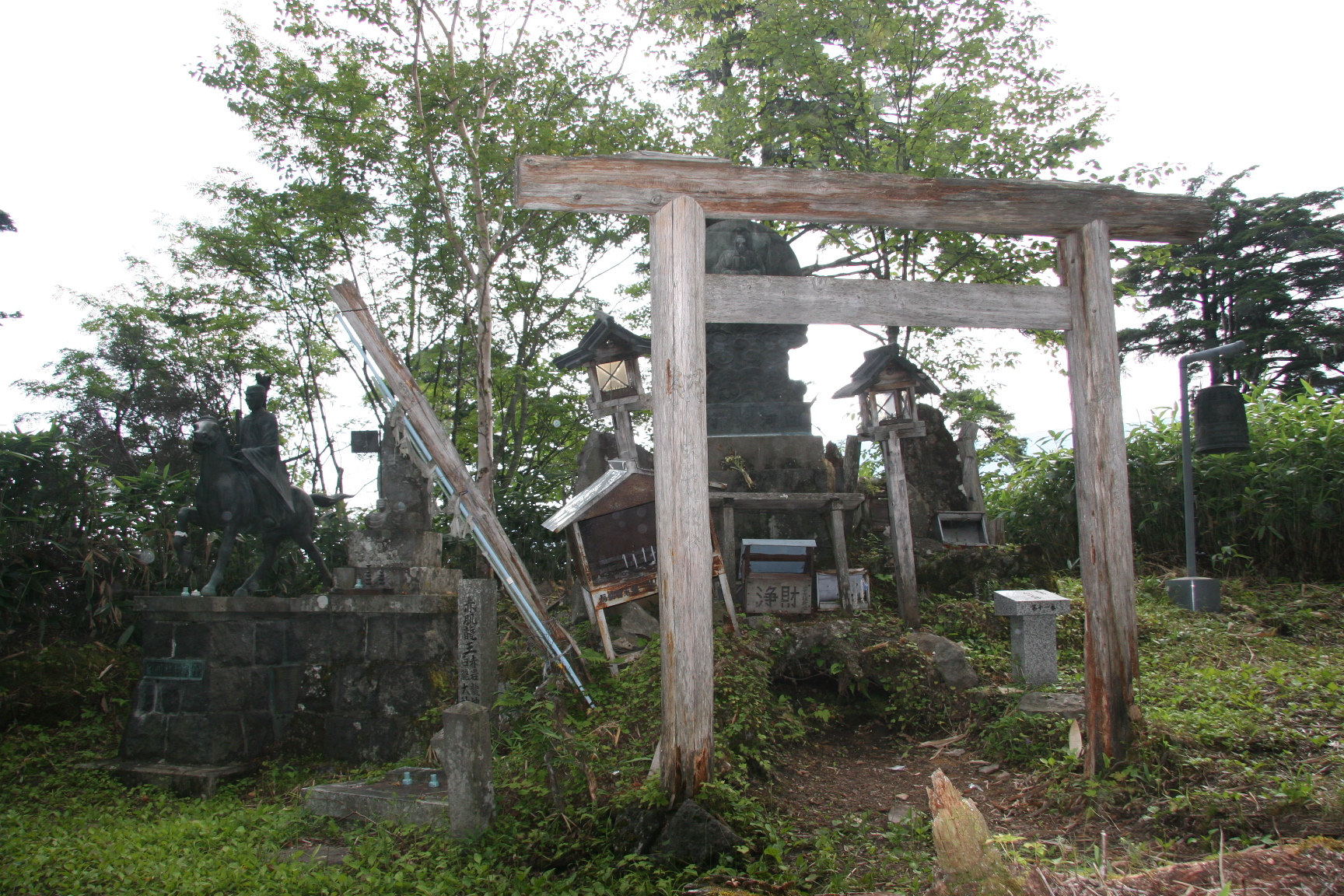
Shirakawa Okami
Beyond Mikasa-yama near the 6th station, Shirakawa Okami is enshrined. It is said this was the god that ordered the ascetic Kakumei to open a trail to Mt. Ontake at Kongofukuji Temple, one of the 88 temples on the Shikoku pilgrimage. There are no shrine buildings, but there are stone monuments and a statue of the deity.
Ontake Kodo & The Ontake Shinko Religion Faith climbing
A Shinko Tozan is a unique endeavor that cannot be experienced on a normal mountain climbing tour. One major attraction is the experience of purifying yourself at a sacred site in the Ontake faith, the Kiyotaki waterfall, under the tutelage of a guide. Climbing Ontake mountains after purifying body and soul is a completely different climb! Hiking with a guide well-versed in the Ontake Kodo will allow you to gain an even deeper understanding of our ancestors who sought religious foundation in Ontake Mountains.
Tour itinerary for Day 1
JR Kiso-fukushima station
↓ By Taxi
Tour itinerary for Day 2
↓ 5 minutes walk
Ontake Ropeway I-imori kogen station
↓ 2hours 30minutes walk
↓ 40 minutes walk
↓ 40 minutes walk
Tour itinerary for Day 3
↓ 10 minutes walk
Ontake Ropeway Kanose station
↓ By Taxi
JR Kiso-fukushima station
Route Guide
<Tour itinerary for Day 1>
On day one, walk a portion of the Ontake Kodo Otaki route. Today’s highlight is experiencing takigyo, or waterfall purification, while descending from Juni Daigongen Shrine at the 4th station down to Kurumisawa Ryokan inn at the 1st station over the course of four hours.
First, offer a prayer at Juni Daigongen Shrine, and after enjoying a bento served in a traditional magewappa bento box made of Kiso cypress at Azumaya, you are ready to start walking. The mountain trail heads toward Shintaki waterfall. Here, you will go behind the falling water of the falls and observe. Next, you will change into a white shroud at Kiyotaki waterfall and experience takigyo.
Now you are onto Omata Sansha Shrine, which is surrounded by a dense forest of trees. The Japanese confectionary, Himeya, which is on the way to tonight’s accommodation, Kurumisawa Ryokan, boasts delicious Kuri Kinton and Kuri Kinton pie, which are sweets made with sweet potato and chestnuts. You may not be able to resist the urge to stop in.
At Kurumisawa Ryokan you’ll enjoy a Shojin Ryori meal, which is traditional Buddhist cuisine, of locally sourced vegetables and edible mountain vegetation. The local dish, sunki-tsuke, will also be served.
<Tour itinerary for Day 1>
On day two, after receiving a blessing at Ontake Shrine’s Otaki Satomiya, you will head out for the summit of Ontake mountains. Using the Kurosawa route, you’ll take the Ontake Ropeway straight up to the 7th station at an elevation of 2,150 meters.
Once you start your climb, when you make it past the tree line, a rugged, rocky terrain will begin to appear. When you get to the Ishimuro Sanso mountain hut at the 9th station, you will have some lunch and recharge. After that, you will come upon a junction. If the weather is good, you’ll head for the main peak, Kengamine, otherwise you will go straight to Ninoike Hutte mountain hut.
At the mountain hut, you will spend some time relaxing under the kotatsu heater and get to bed early in preparation for watching the sunrise from the mountain top the next day. Dinner will be a delicious dish of sauteed chicken in a tomato sauce.
<Tour itinerary for Day 3>
On day three, if the weather is good, you can greet the new day with the sunrise from the Ken-gamine peak(the summit of Ontake mountains). You will descend the same route you climbed and eat a bento lunch prepared by Ninoike Hutte.
The Gyoba-sanso mountain hut located a stone’s throw away from the ropeway station is famous for its Chikaramochi and Zenzai, which are perfect snacks for a short break.
Once you return to the foothills, a bath at one of the carbonated hot springs is sure to soothe away the fatigue from your climb.
The key to a good tour is great guides
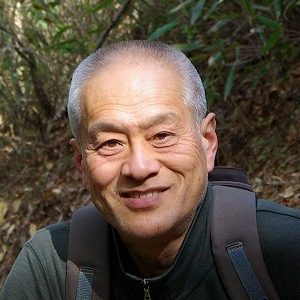
Yukinobu Koshi
A local originally from the town of Kiso. He works at the Kiso Ontake Tourism Office and has been a walking guide for the Ontake Kodo for many years. He is an expert on all aspects of the Ontake faith, and he is able to provide tours in English.
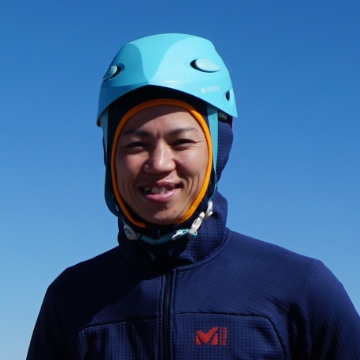
Yukio Koike
Originally from Shizuoka Prefecture, he now lives in Otaki Village. After working as a part of the Village Revitalization Corps, he became a Nagano Prefecture-certified mountain guide. He explains the allures of Ontake mountains to hikers on a daily basis.
Ontake Kodo & The Ontake Shinko Religion Faith Climbing Travelogue
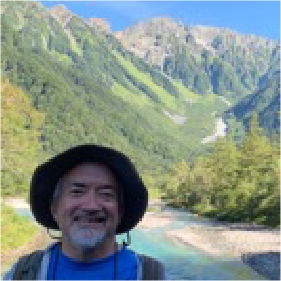
Bruce Guilfoile / from USA
Has lived in Japan for over 50 years. He has worked for advertising companies and has also worked on outdoor brands such as L.L.Bean. He is currently an inbound advisor for the Japan Alps Guide Center. He has an extensive network of contacts with foreigners living in Japan.
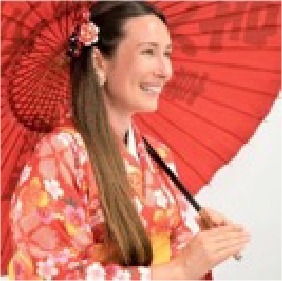
Anika Godek / from Poland
She has been living in Japan for four years. She is currently working as a contact person for inbound tourists at Fuchu City Hall in Tokyo.
She has a strong interest and love for the Japanese people and their culture, and was extremely motivated to participate in the faith climbing trips. Since coming to Japan, she has developed a passion for hiking and has climbed Mt. Fuji four times.

Tiffany Rossdale / from the Philippines
Tiffany has lived in Japan for over 25 years. She is an active fashionista and socialite with an extensive network of foreign residents in Japan.
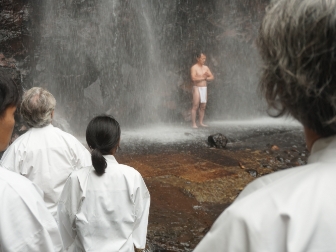
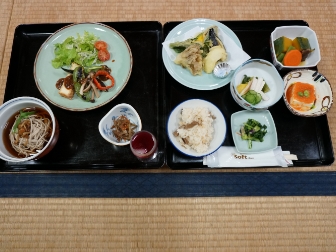
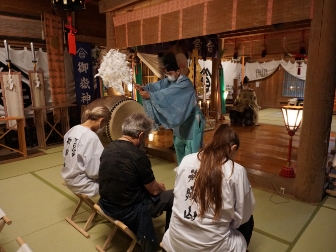
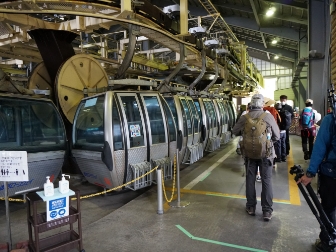
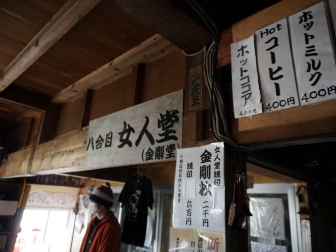
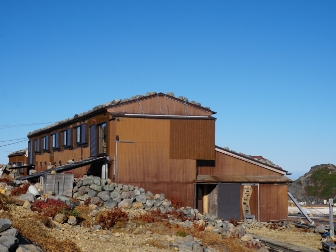
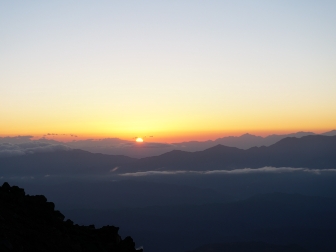
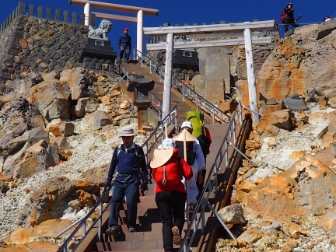
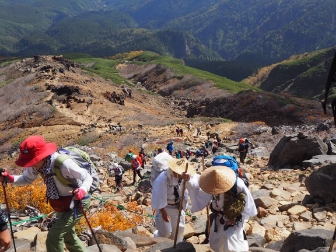
Comments from Bruce
●About the Reijin monuments
Over the course of three days, I saw numerous Reijin monuments, and these stone monuments are not only works of art, but they also exude a strong sense that spirits are indeed present and create an other-worldly feeling (not found in this one).
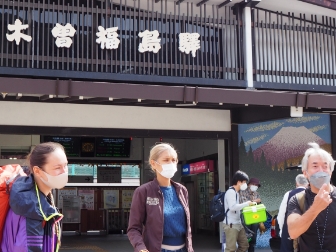
●About the waterfall purification
Takigyo waterfall purification was truly a revolutionary experience. The landscape surrounding the waterfall was like the set of a movie, and the guidance from the inn owner, Mr. Koji Kurumisawa, was perfect. It felt as if his chanting led us into another world. The huts and rocky caves where the ascetics stayed for 75 days really conveyed the ideology of takigyo as a form of prayer offered to the gods.
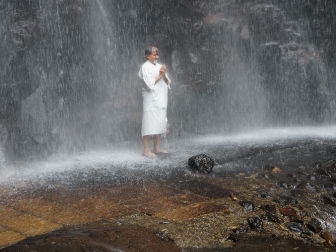
●About climbing Ontake Mountains
The hike up Ontake Mountains were wonderful. The sight of Reijin monuments enveloped in clouds and fog along the trail made me feel as if I was on a different planet, like in the movie “Planet of the Apes” or “Dune.” Simply put, it was an amazing experience.
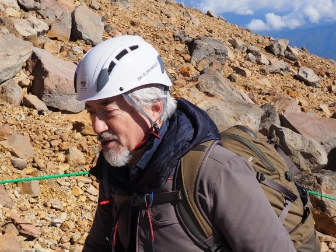
●I want to recommend this tour to friends!
First of all, I’d like to recommend a Shinko Tozan, or faith hike, up Ontake mountains to my overseas friends. The local tourist association has given great thought to this trip that enables you to visit so many sites in a limited amount of time and gain an awe-inspiring reverence for the mountain. You will definitely find the tour satisfying. I recommend this tour to those who are interested in the outdoors, cultural anthropology, or those who are interested in seeing a slightly different view of the world, especially. I’d also like to tell my friends who have experienced living in Japan in the past and those who have an interest in Japanese culture and want to get in touch with Japanese culture again.
Comments from Anika
●About the waterfall purification
It was a very challenging, safe, and difficult to book event for me, and my family and friends were impressed when they saw the photos. It was one of the most valuable experiences I’ve had in Japan. It allowed me to feel a connection with ancient Japan and gave me an even deeper understanding of Japanese culture.
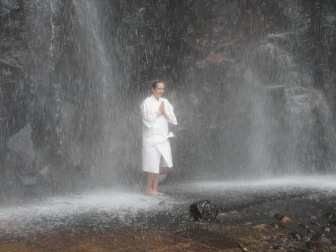
●About watching the sunrise”Goraiko” from the mountain
Overseas, most people watch the sunset, not the sunrise. Watching the sunrise”Goraiko” is very important to Japanese people, and it was a good opportunity for me to explain customs such as watching the first sunrise of the year to my parents and friends. We were very fortunate to have had great weather. It was a very special moment that gave me a new appreciation for everything I have experienced in life. The wind was strong, so we didn’t go to the summit, but that’s okay. It was more important to find a place out of the wind, and I think the spot we watched from was perfect for that. It was great that we only had to hike 10 – 15 minutes to get to the spot without expending a lot of energy.
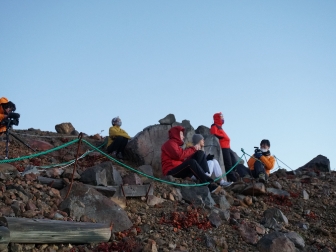
●About interacting with the locals
The locals seemed to welcome speaking with me, and they put me at ease. When I visit a new place, it is not only the famous sites I visit, but also the brief encounters that sometimes leave the biggest impressions. The smiles, jokes, and conversation of the family at the chestnut confectionary where we stopped during our hike along the Kodo all made me feel more accepted and special.
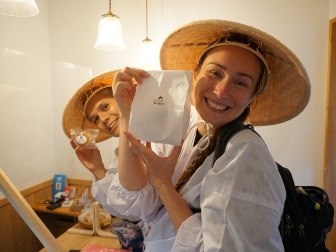
●I want to recommend this tour to friends!
First of all, this tour is active, fun, and a wonderful experience that will deepen your knowledge of Japan. Second, this spiritual adventure goes beyond the boundaries of religion and teaches foreigners like me new ways of thinking while respecting our beliefs. Personally, I was able to find a way to combine Japanese faith climbing with my own beliefs and get closer to the god that I believe in along the way. I especially recommend this tour to those who want to restore their faith in god. It is not easy to make a reservation for takigyo in Japan, and there are few places that provide this kind of experience, so I want to tell my friends that being able to do this with experienced locals is a very unique opportunity. It is definitely worth the challenge of the hike, safe, and fun.
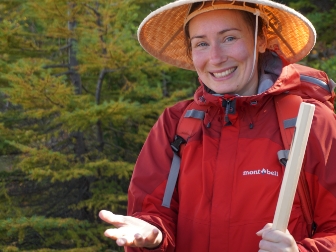
●I have more to say!
I think this was a successful experience that will stay with me for the rest of my life. I was moved by the beauty of Japan’s mountains and inspired by faith climbing Ontake mountains. I’d like to participate in this tour again next year. I will be back again to perform takigyo, and I feel a need to spend more time here, and I will definitely climb up and down in the white shroud I was given. The guides and staff members where we stayed were all so kind, I can’t wait to visit again someday. Everyone took great pictures along the way, so I was able to share this beautiful memory with my friends on social media.
Comments from Tiffany
●About the waterfall purification
I’ve never experienced anything like that before though it was something I was always interested in, so it was a very valuable experience. It was great because the precautions and safety checks beforehand and the prescribed rituals are all very important.
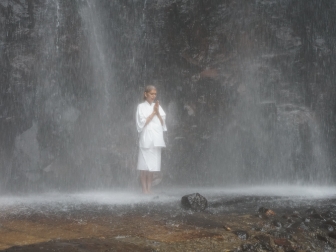
●About Ontake Shrine’s Satomiya
The blessing we received at Ontake Shrine in order to climb the mountain was an extremely important ritual for me. The weather was bad on the first day of our climb and we had some difficulties, but it really felt like we were protected.
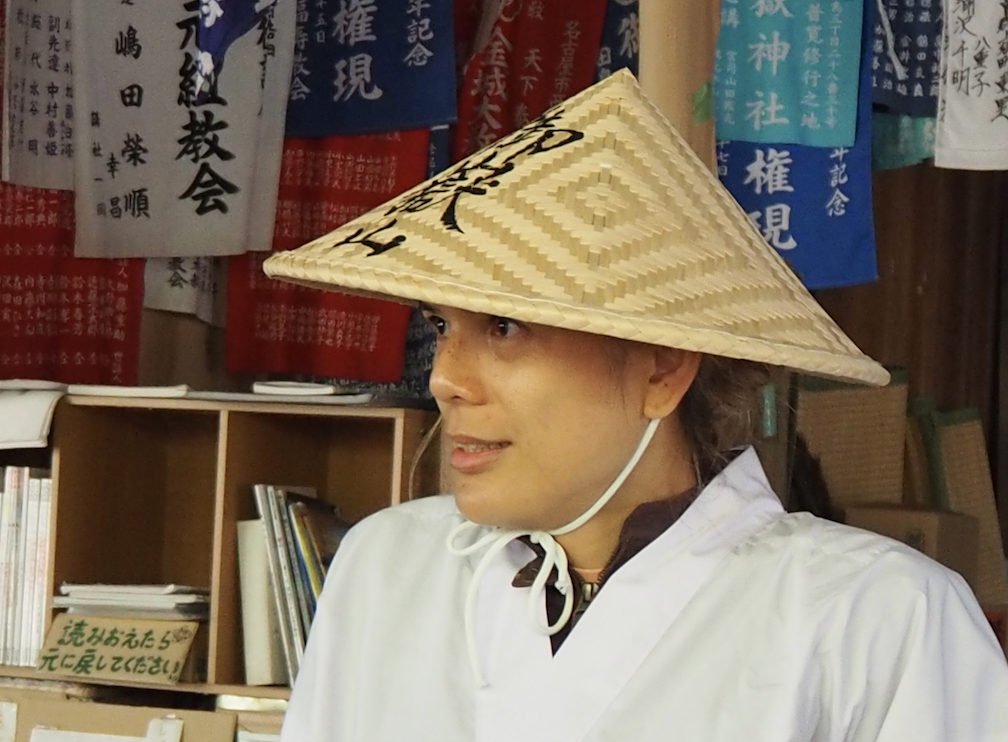
●About watching the sunrise”Goraiko” from the mountain
This was the first time I ever climbed such a high mountain, and watching the beautiful sun rise from the mountain top was a supremely amazing experience.
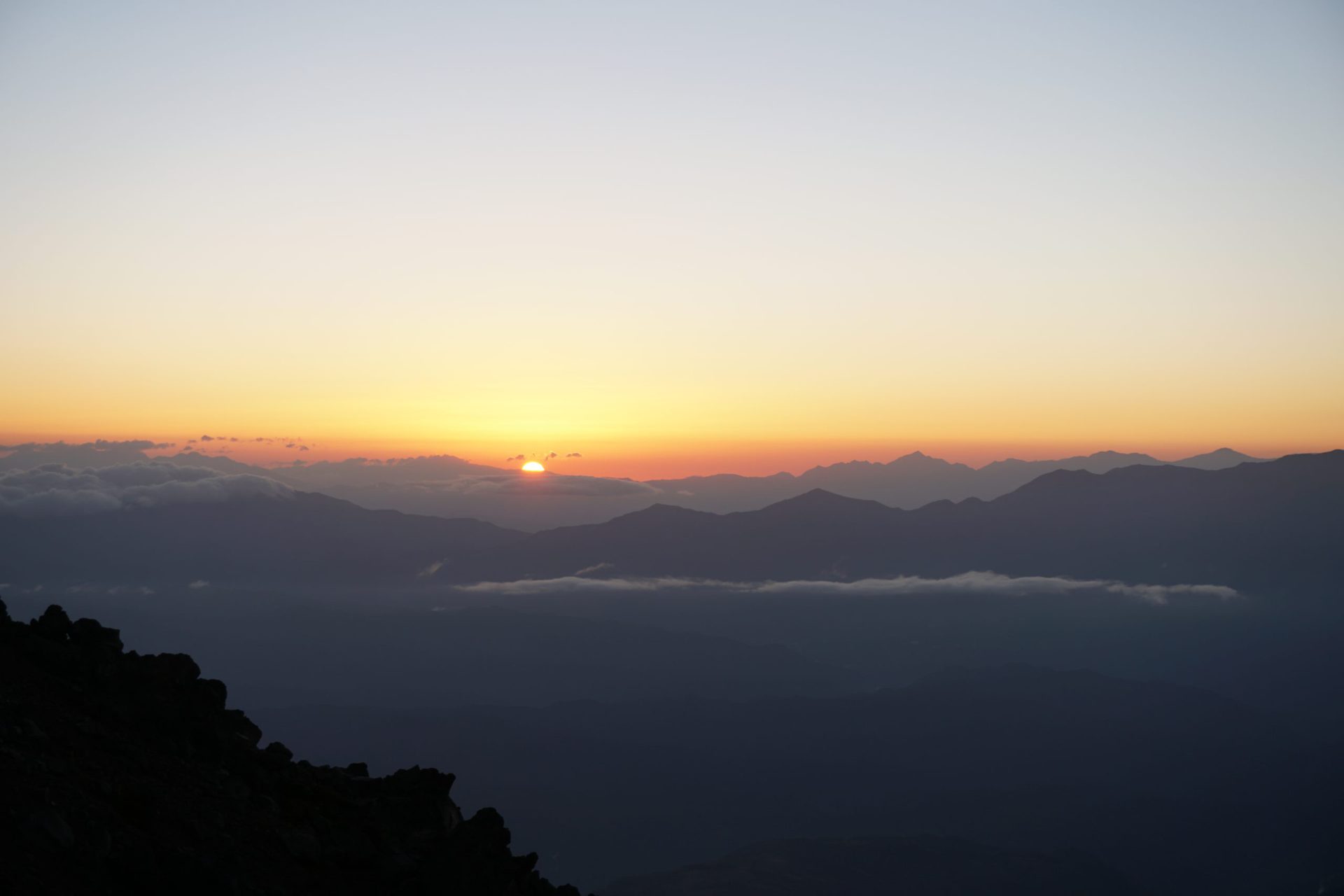
●I want to recommend this tour to friends!
I would like to recommend faith climbing to my friends through the surprisingly spiritual experience I had. It was the first time I climbed a high mountain in Japan, but I could feel a power surging within me. When I face the most difficult spiritual challenges, I can find strength in this special experience that combines the natural and spiritual.
